Lunar mission "Bereshit" - April 4, 2019 made a transition to lunar orbit, ahead of 7 days of flight, 6 maneuvers and 1 landing
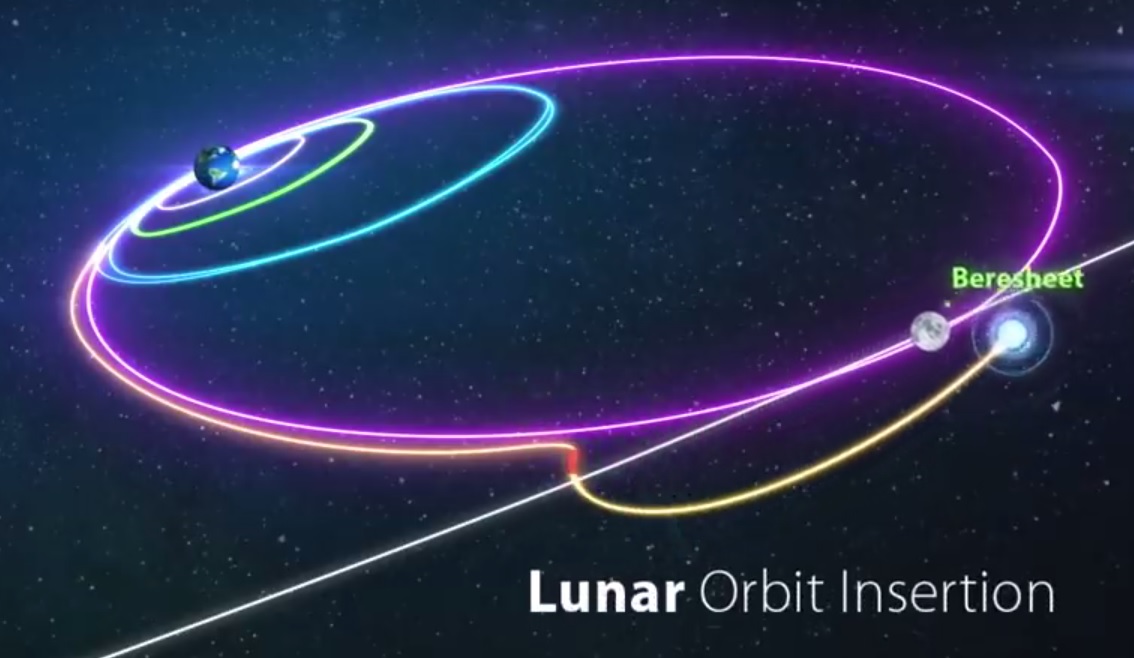
Under the motto “Farewell Earth, maneuvering and catching the moon”, the Bereshit device began the most difficult part of its flight - lunar gravitational maneuvers for moving from Earth's orbit to the moon's orbit.
Engineers had only one attempt to make this transition, with any error or miscalculation, if the on-board computer and the engines did not work properly - the device would have missed the Moon and flew into outer space, without the possibility of returning.
')
He jumped, jumped (he made six maneuvers in Earth orbit) and jumped to the Moon's orbit!
Attention, there are a lot of pictures inside.
Added new photos from the orbit of the moon!
New photos from the Bereshit apparatus, the distance to the moon's surface is 500 km.
The white disk is Earth!


Previously published materials about the mission "Bereshit":
1. Moonlight mission "Bereshit" - an online portal with a simulator of the trajectory and monitoring of current flight parameters .
2. Moon mission “Bereshit” - selfies against the background of the Earth .
3. Moonlight mission “Bereshit” - the engineers at the SpaceIL and Israel Aerospace Industries (IAI) MCC solved the problems .
4. Lunar mission "Bereshit" - the characteristics of the apparatus, a series of maneuvers and the longest journey to the moon .
5. Lunar mission "Bereshit" - the fourth maneuver is completed successfully, preparations are under way to enter the lunar orbit .
6. Moonlight mission "Bereshit" - the first video from the onboard camera and new photos in outer space .
7. Moonlight mission "Bereshit" - eight milestones of success and $ 1 million from the "XPRIZE Foundation" (assuming a successful landing) .
2. Moon mission “Bereshit” - selfies against the background of the Earth .
3. Moonlight mission “Bereshit” - the engineers at the SpaceIL and Israel Aerospace Industries (IAI) MCC solved the problems .
4. Lunar mission "Bereshit" - the characteristics of the apparatus, a series of maneuvers and the longest journey to the moon .
5. Lunar mission "Bereshit" - the fourth maneuver is completed successfully, preparations are under way to enter the lunar orbit .
6. Moonlight mission "Bereshit" - the first video from the onboard camera and new photos in outer space .
7. Moonlight mission "Bereshit" - eight milestones of success and $ 1 million from the "XPRIZE Foundation" (assuming a successful landing) .
The main characteristics of the mission and lunar apparatus "Bereshit":
- the beginning of the mission: February 22, 2019;
- the planned end of the mission: landing April 11, 2019, loss of communication with the device April 14, 2019;
- trajectory of movement to the moon (in fact, the maximum of the possible): complex, changeable by performing a series of maneuvers (turning on the engines for a few seconds or even minutes) to increase the apogee of its elliptical upholstery after each orbit around the Earth;
- the height of the Bereshit apparatus is about 1.5 meters, the diameter is 2 meters (2.3 meters between the landing supports);
- weight 530 kilograms with fuel (fuel weight - 380 kg), 150 kg without fuel;
- propulsion system is represented by a chemical rocket engine of the LEROS family (LEROS 2b). The fuel of the Bereshit apparatus is 380 kilograms of monomethylhydrazine, the oxidizing agent is a mixture of nitrogen oxides (MON). The same components use low thrust shunting engines. Fuel tanks are made to special order for the unit "Bereshit" in the United States.
- the main element of the onboard computer: Gaisler HiRel GR712RC dual-core processor;
- six 8-megapixel cameras Imperx Bobcat B3320C with Ruda optics;
- scientific instruments: magnetometer, an array of laser corner reflectors.
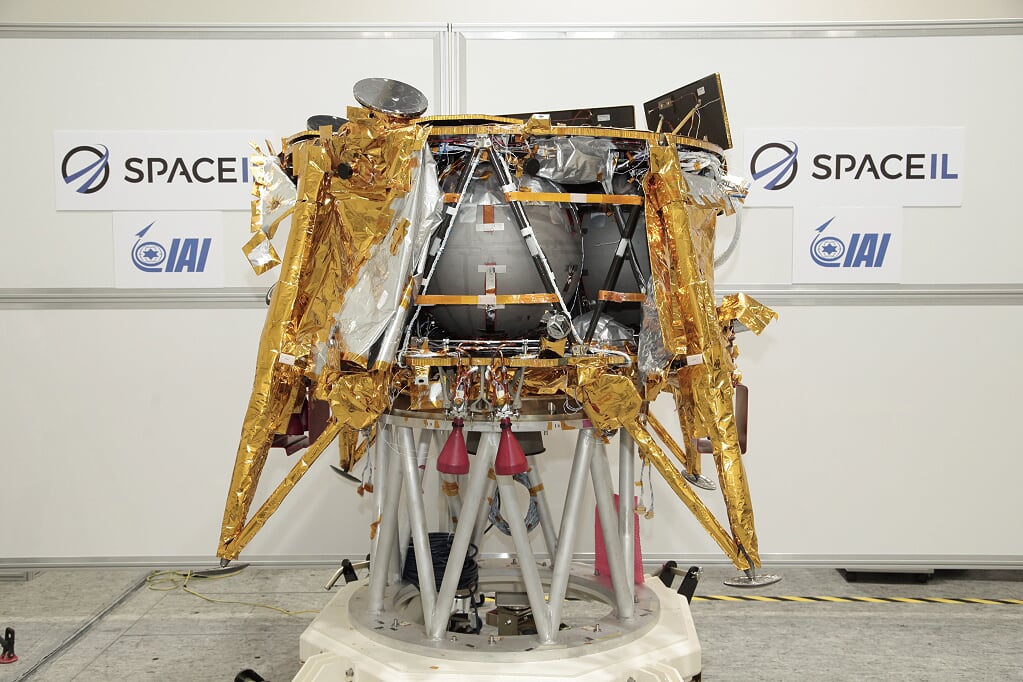
The Bereshit device was developed by SpaceIL organizations, which is mainly supported by private investors, including American magnate Sheldon Adelson and billionaire Morris Kahn, who are also co-determinants of Amdocs (DOX), one of the largest companies in Israel.
By force and by means of only one small private company, it is impossible to send the lunar apparatus into space, but with the help of the international space community, you can turn an idea into a fully-fledged project that is currently being implemented.
Project participants involved in the mission "Bereshit":
- a team of young Israeli scientists and engineers from the company SpaceIL,
- NASA (USA)
- ISA (Israeli Space Agency),
- IAI (Israel Aviation Industry Concern),
- Spaceflight Industries (USA, organizer of the launch of the Bereshit apparatus into orbit),
- SpaceX (USA, Falcon 9 booster rocket),
- Swedish Space Corporation (Swedish Space Corporation),
- Cobham company (Sweden),
- company Ramon Chips (Israel).

After all, SpaceIL is a small organization by world standards, its staff includes about 200 people, and most of them are volunteers, scientists and engineers who “strive to promote the development of technological and scientific progress in Israel.”
Project Engineers:


The first outline drawings of the apparatus "Bereshit" and calculations:
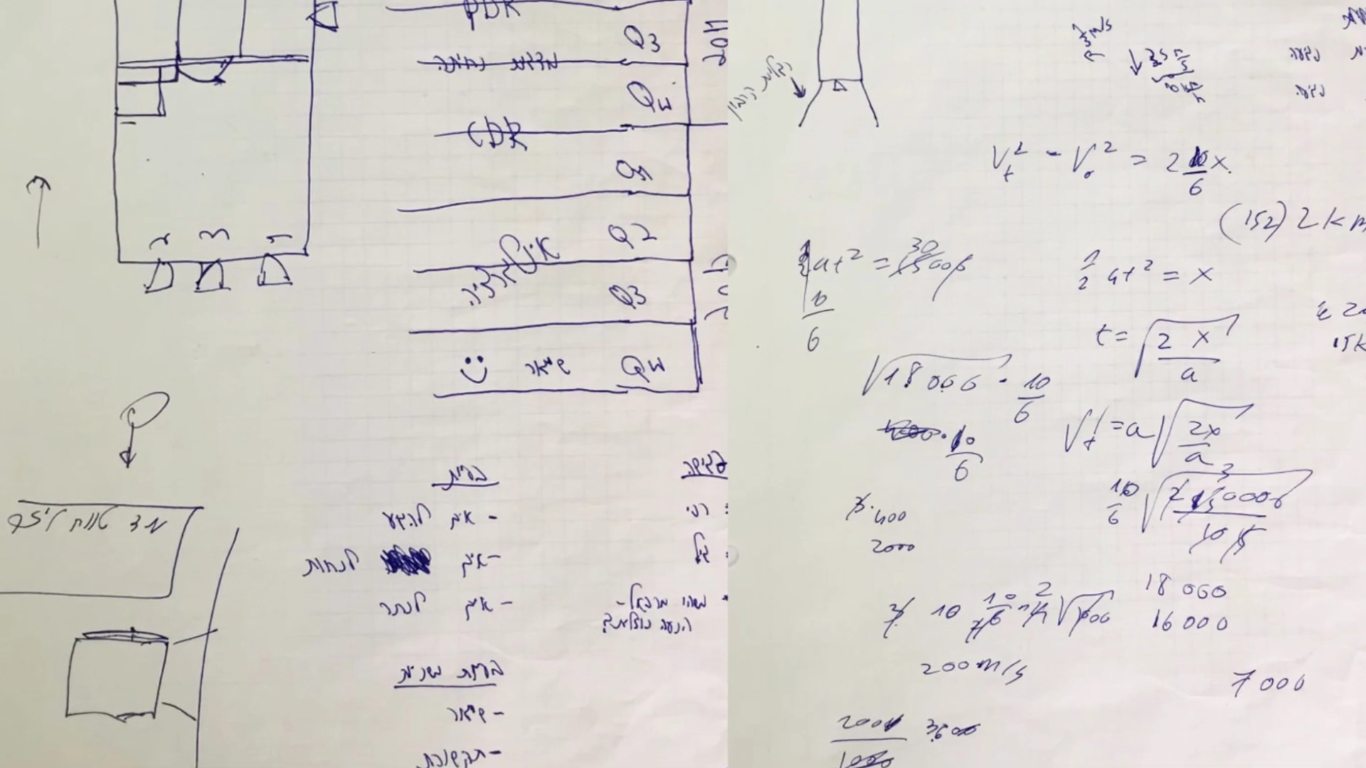
How the Bereshit device was assembled by SpaceIL and Israel Aerospace Industries (IAI) engineers
Bench assembly of the frame without fuel tanks:


First tank:

Second tank:

Four tanks:

Platform with 4 fuel tanks:
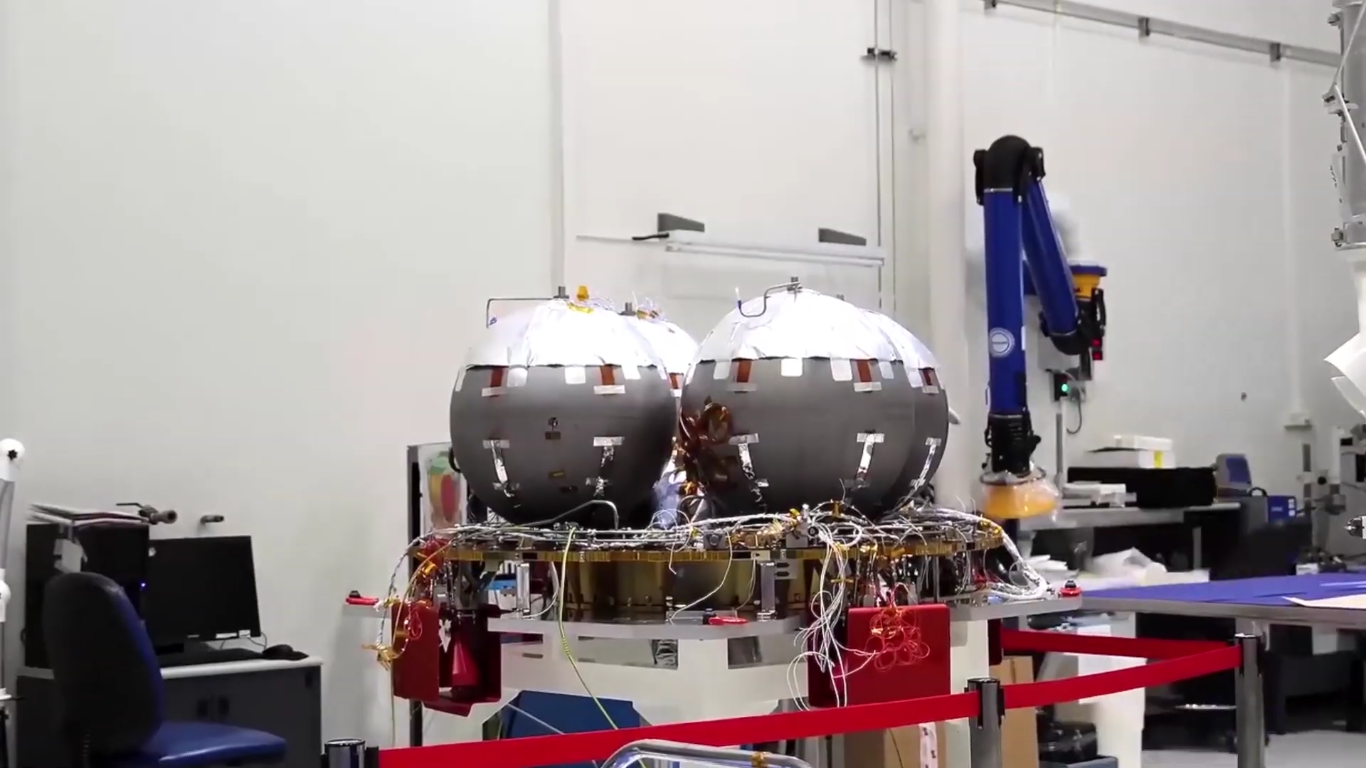
Frame and top installation:
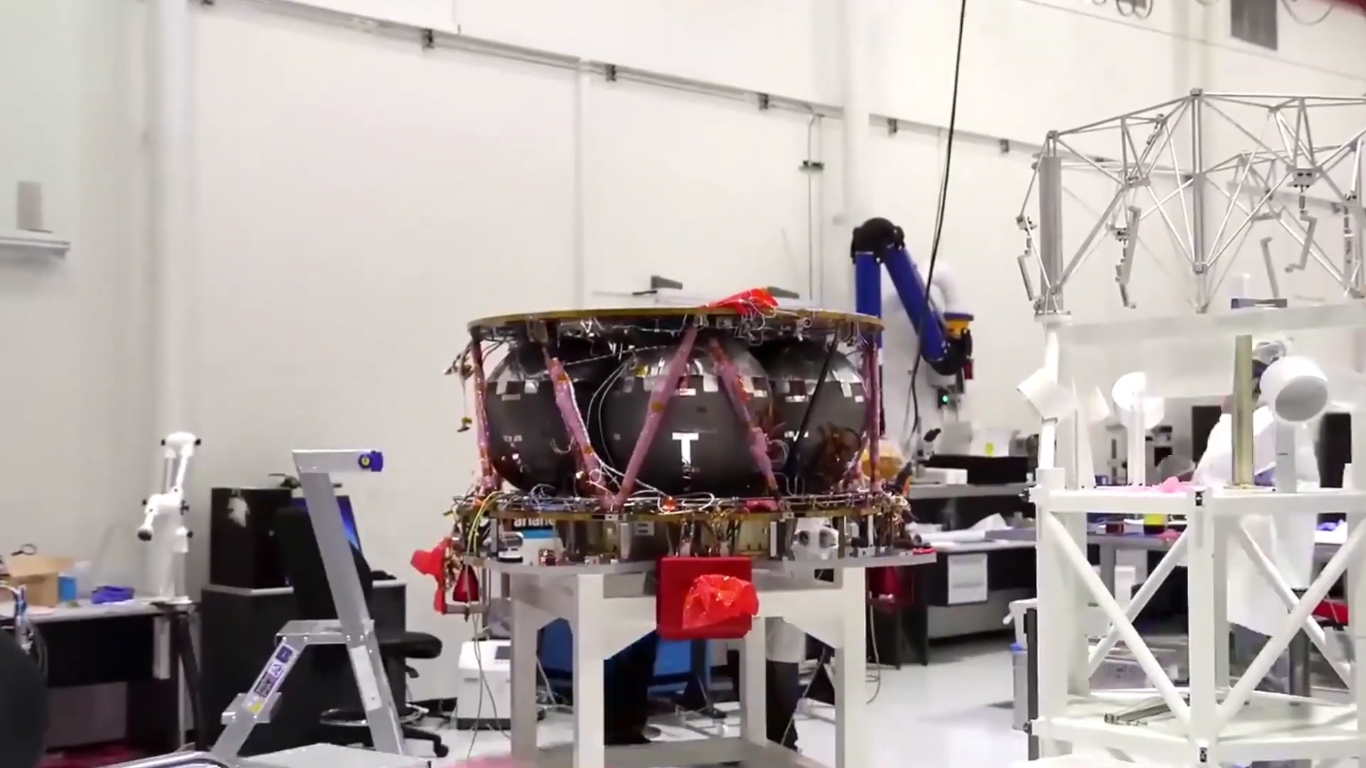
Transportation to the place of installation of additional equipment:


Installation of cables and components:

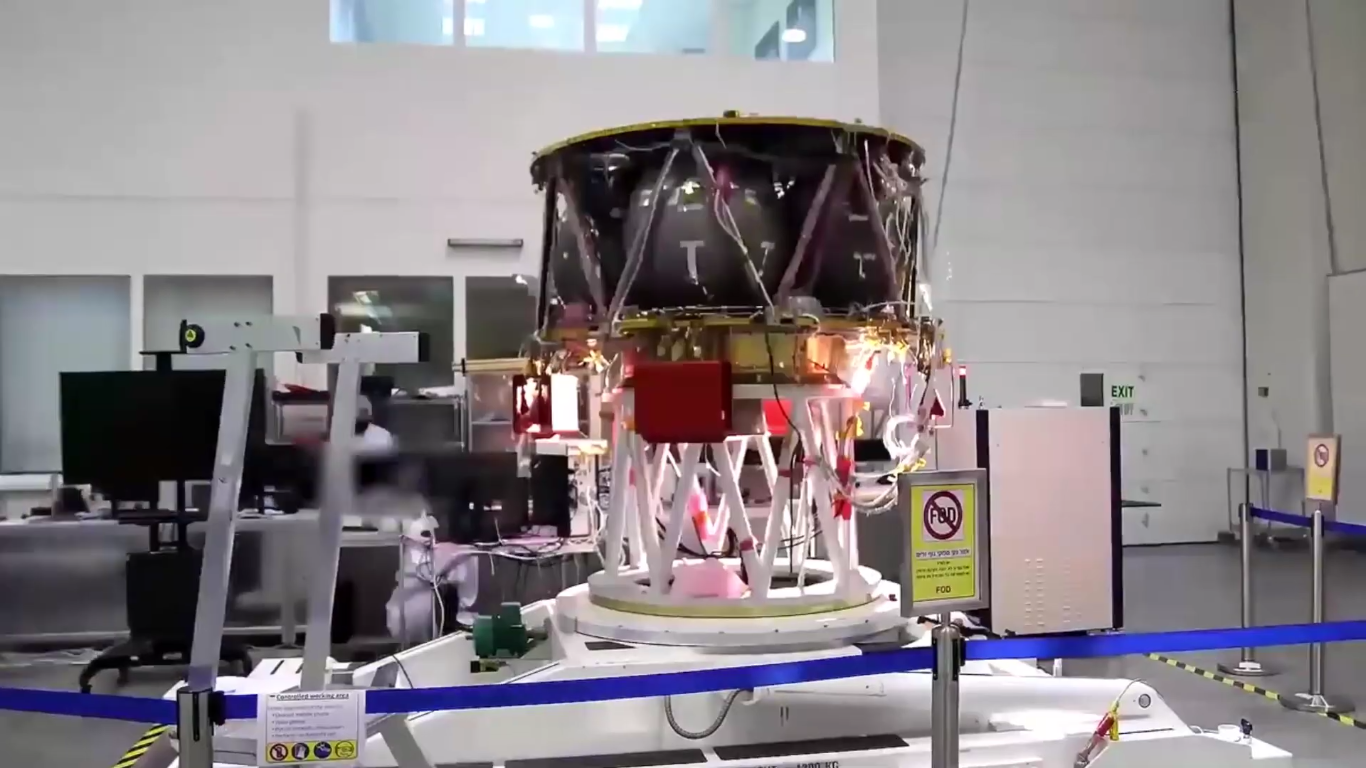
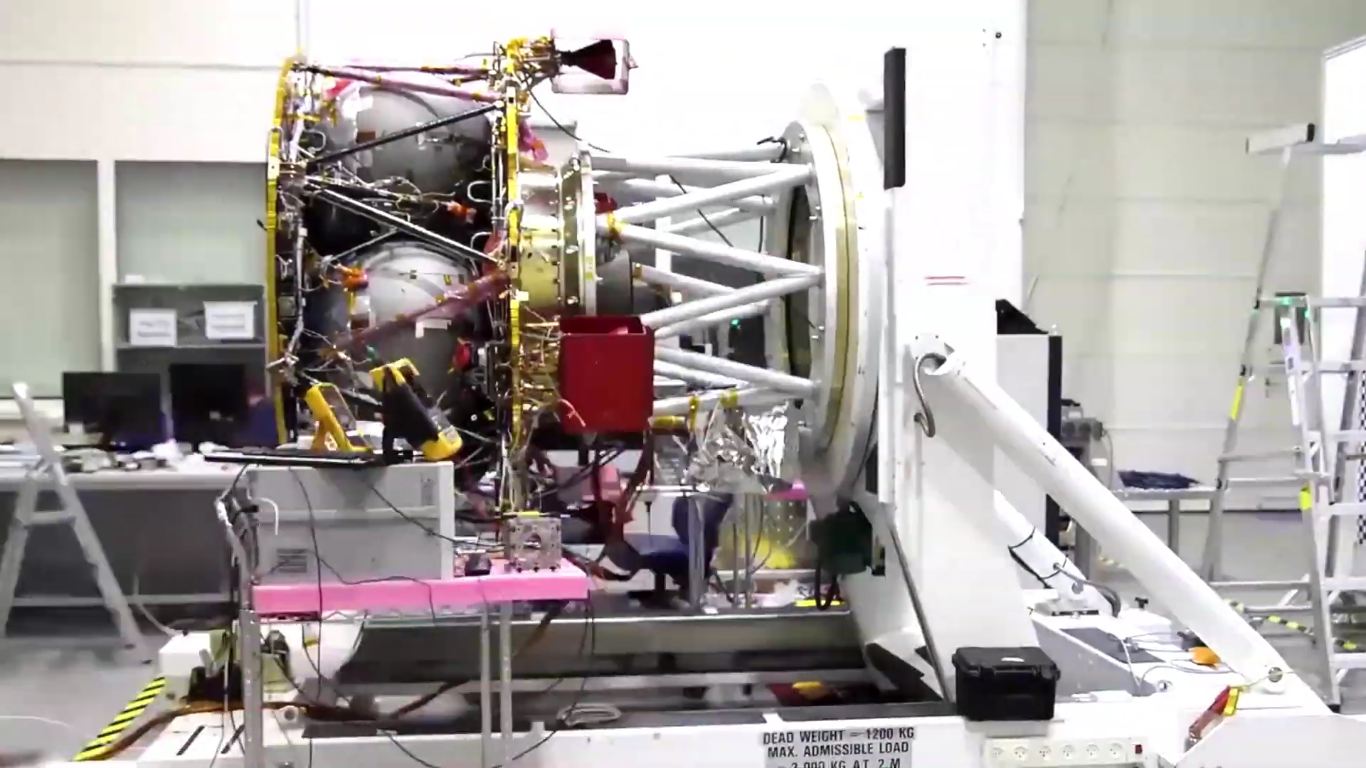

Installation of supports:



Onboard computer check:
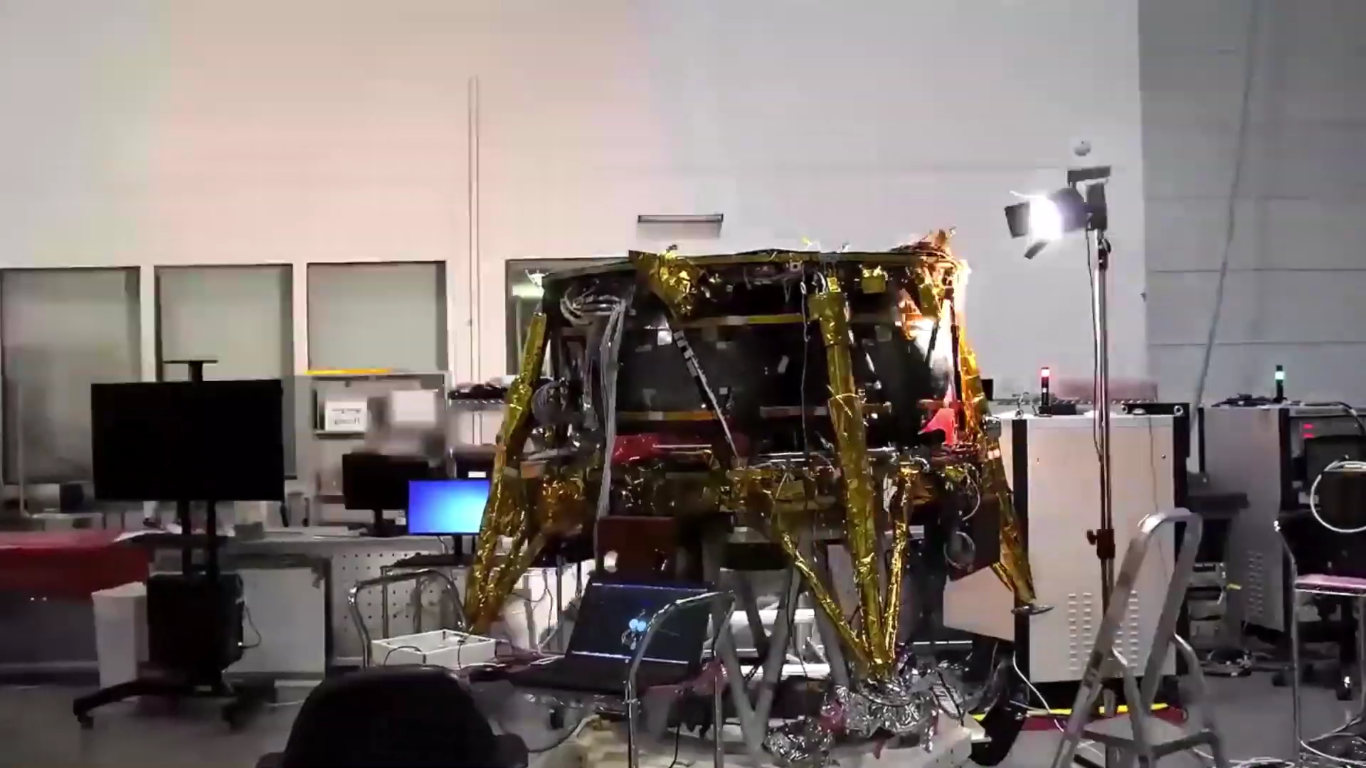
Mounting elements:


Installation of solar panels:


For installation of additional elements, the ramp with the apparatus was turned:


Almost done:

For testing further in the laboratory and camera:
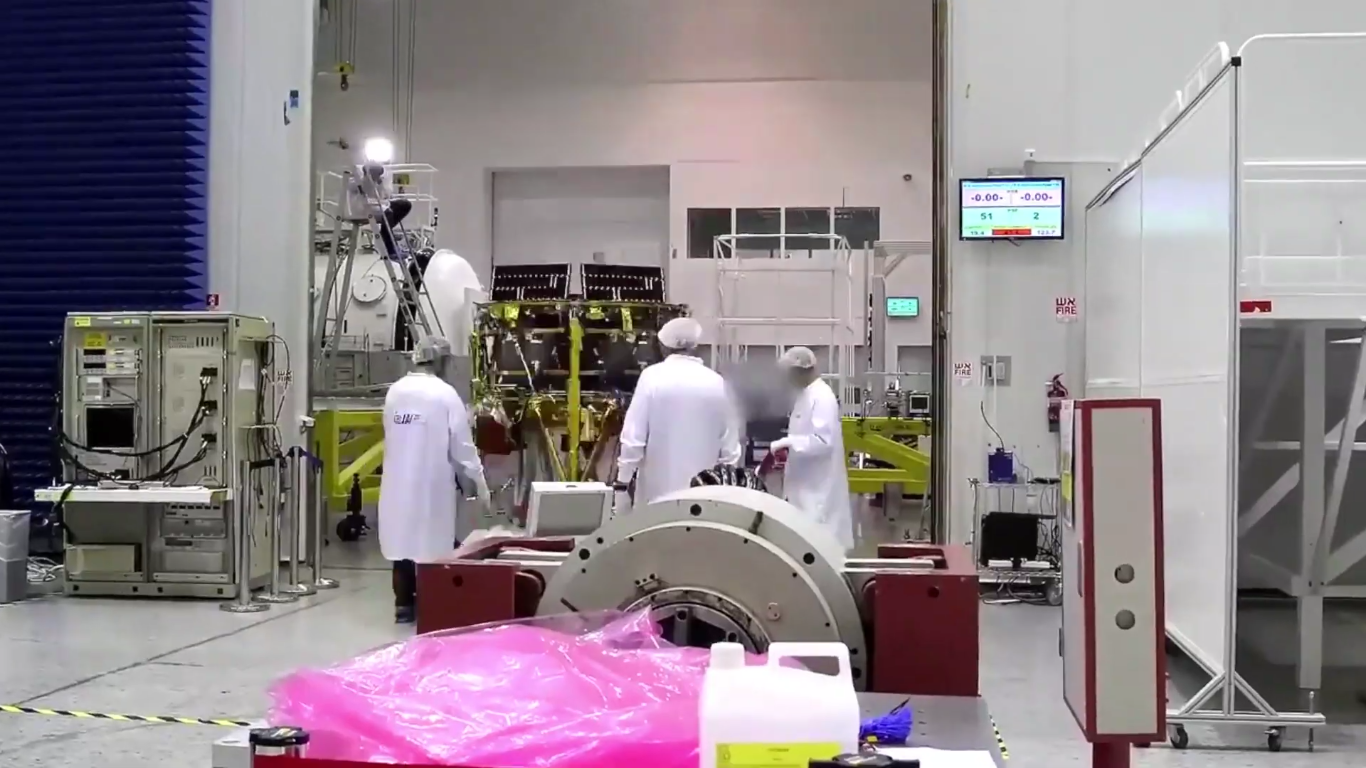
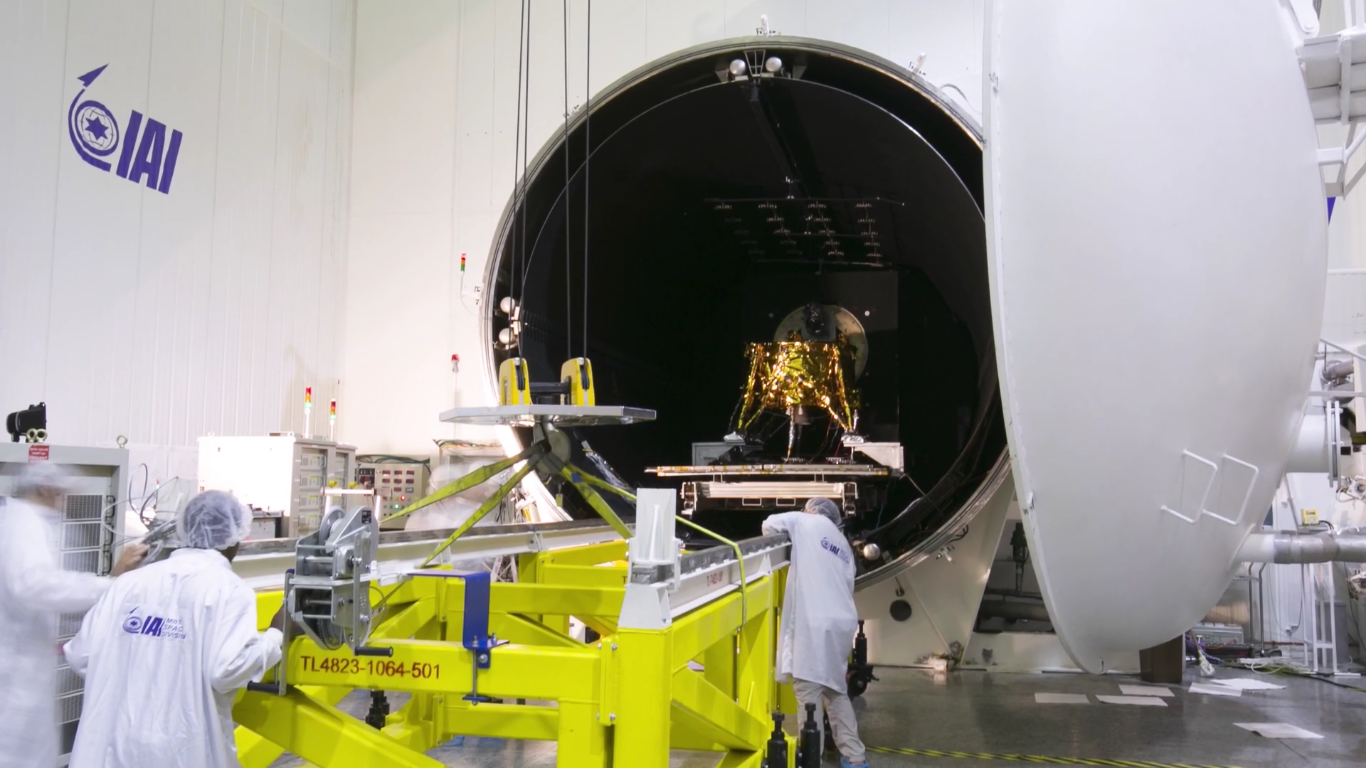

After assembly and preparation - packing the device for transportation to the cosmodrome:
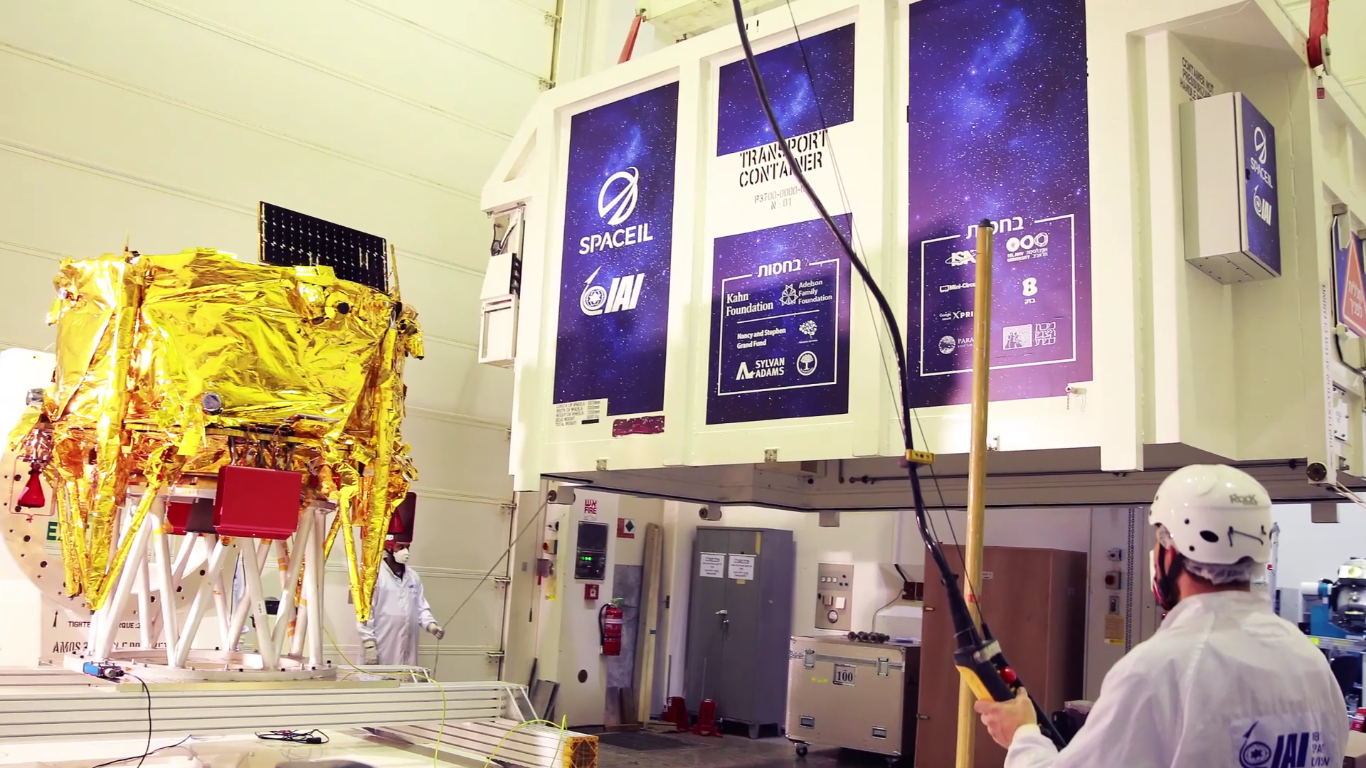
Also, tests were carried out on the functionality of the landing mechanisms on the prototype of the device.
Testing of the supports and structure of the apparatus in the landing mode:
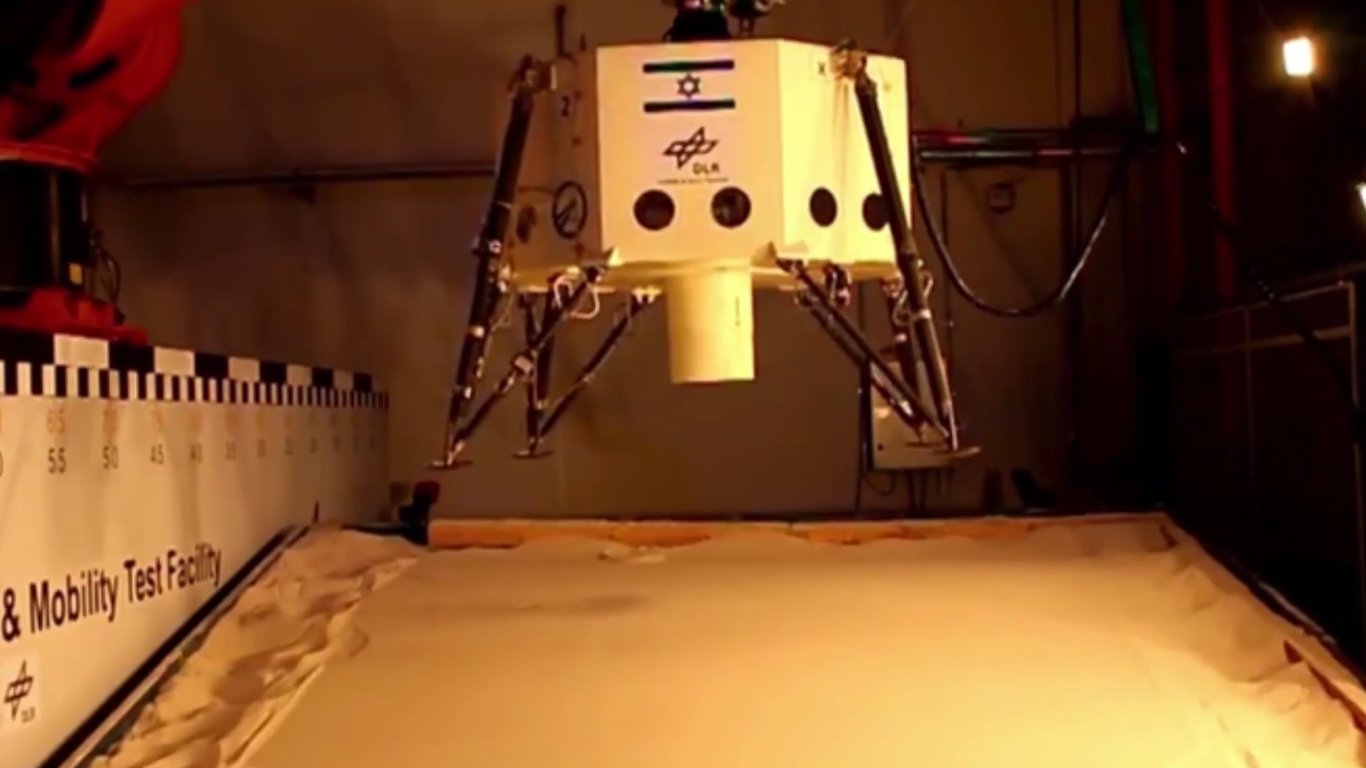

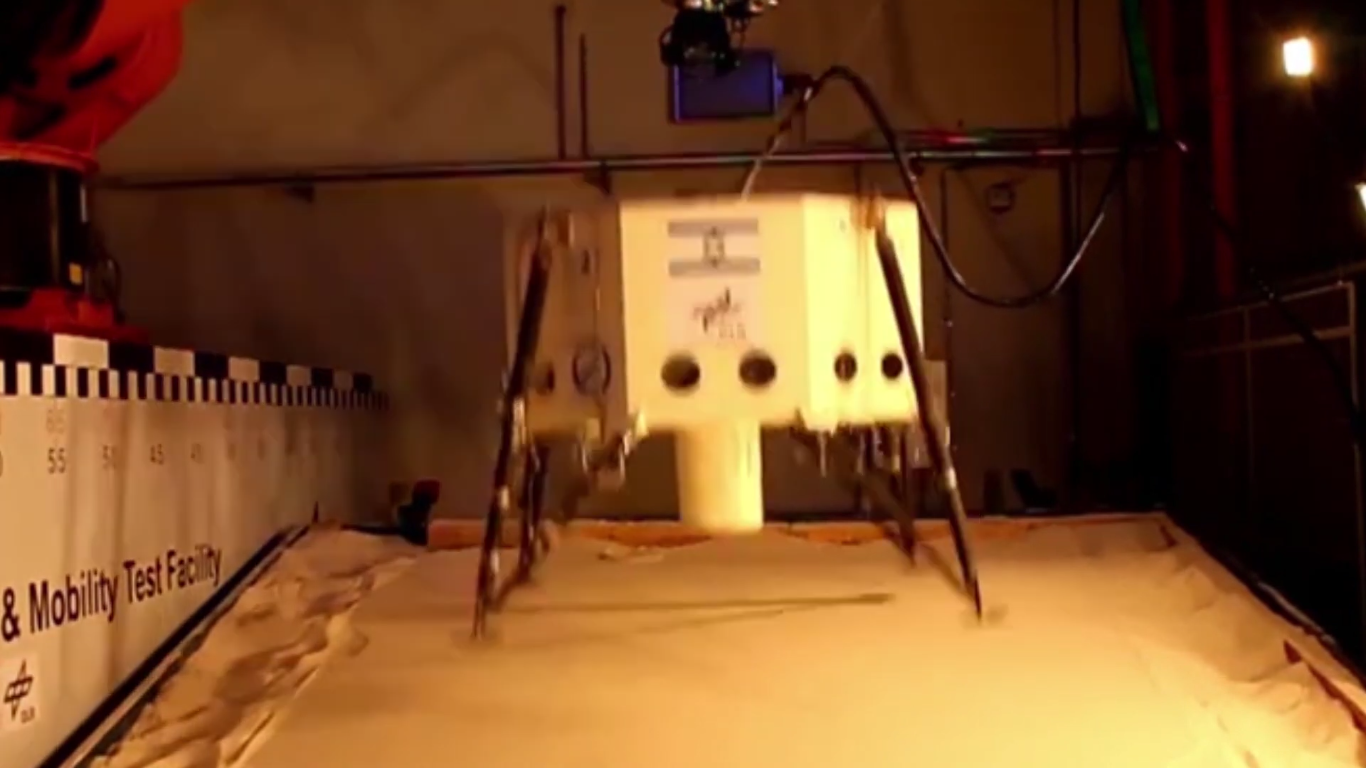


A lot of work was invested in this project, hundreds of sleepless nights of engineers, thousands of hours were spent on the design, development, assembly and testing of the Bereshit apparatus on Earth, and then another 47 days of flight — around-the-clock staff duty at the MCC, and after all the preparation and correction of the trajectory after each maneuver - this is a day of calculations, the creation of basic and alternate solutions for transferring new algorithms of work to the on-board computer of the Bereshit device. And there will also be 2 days on the lunar surface, when data will be received from the Bereshit apparatus until it falls asleep forever.
About the landing site of the vehicle "Bereshit":
According to estimates, the Bereshit device should make a soft landing on April 11, 2019 on a dark lava plain known as the Sea of Clarity, not far from the region in which the Apollo 17 mission astronauts leaped on December 11, 1972.
In SpaceIL promised to record the landing on video and show after a while in the public domain.
The planned landing area of the vehicle "Bereshit":
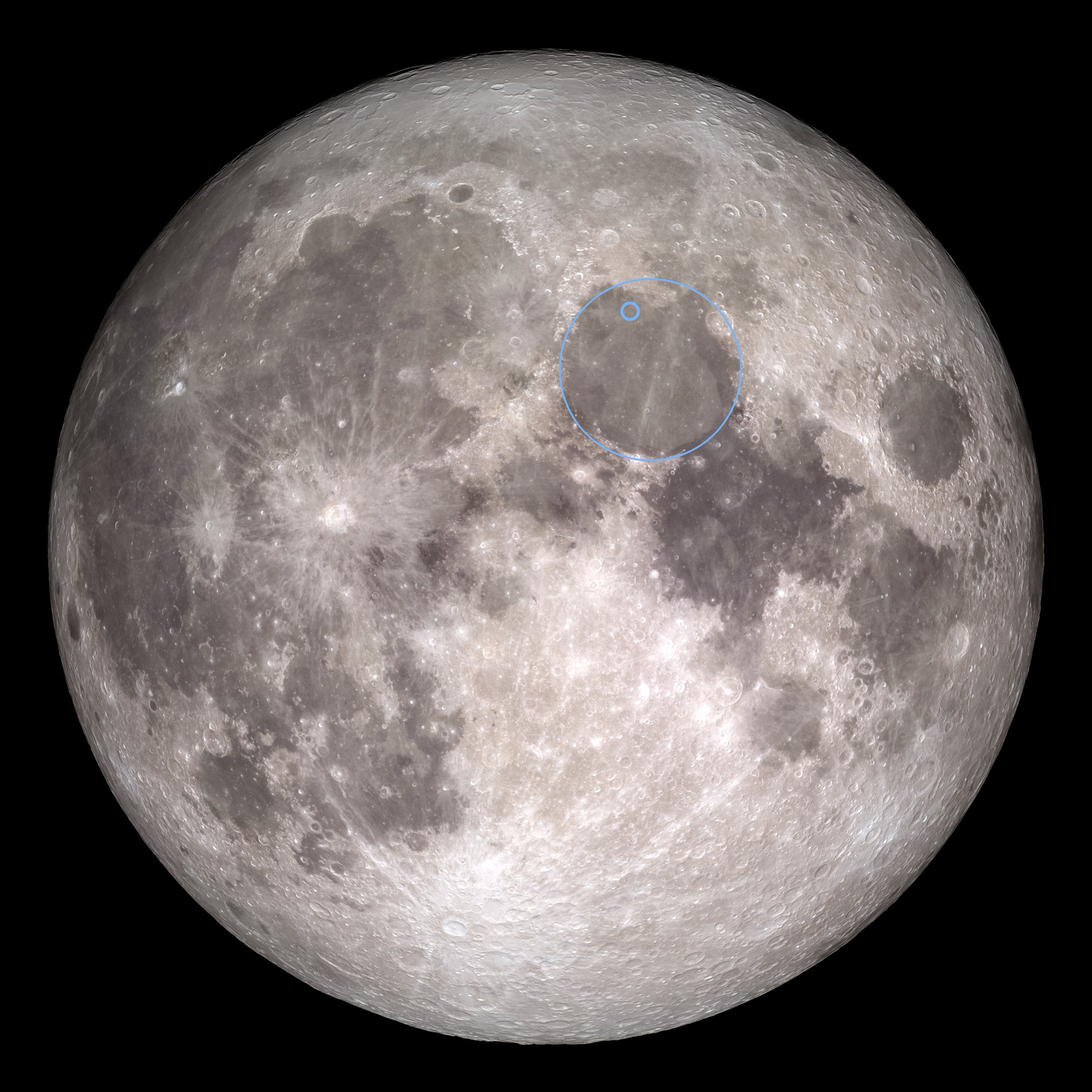

The Bereshit unit has no thermal protection and cooling systems, the estimated operating time on the lunar surface is about two terrestrial days (three days maximum), then its electronics will fail due to overheating, communication with the apparatus will be lost, and it will become a new lunar a monument in the Sea of Clarity, next to Lunokhod-2 (Luna-21 mission) and modules of the Apollo-17 mission.
The date April 11, 2019 is chosen based on the fact that on the surface of the moon in the landing zone at this time will be sunny, but not hot. But the temperature on the lunar surface reaches + 127 ° C, depending on the degree of illumination.
Thus, the Bereshit apparatus should land in the northern part of the Sea of Clarity 48 hours after dawn in this region, when the temperature will be relatively low.
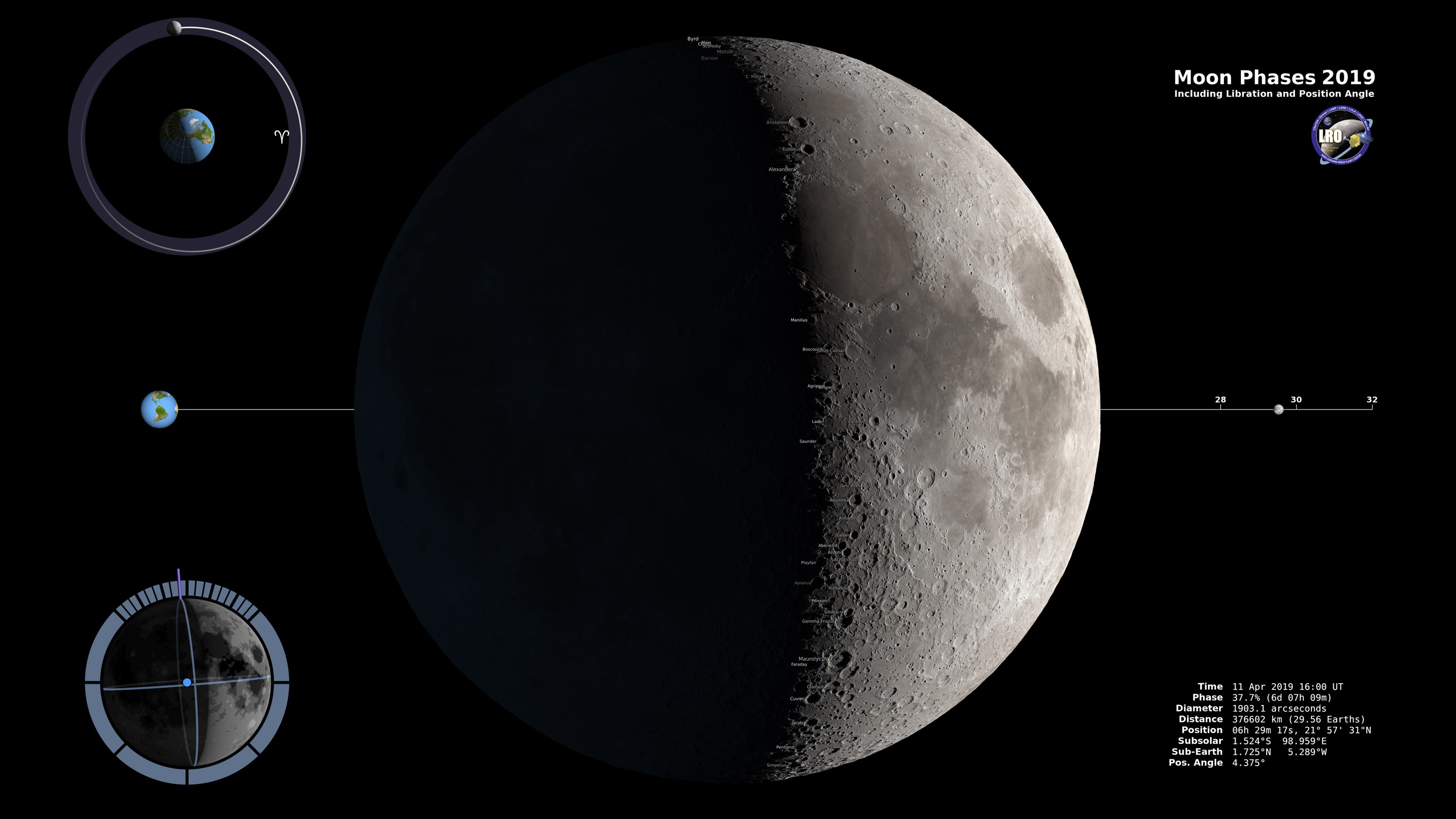
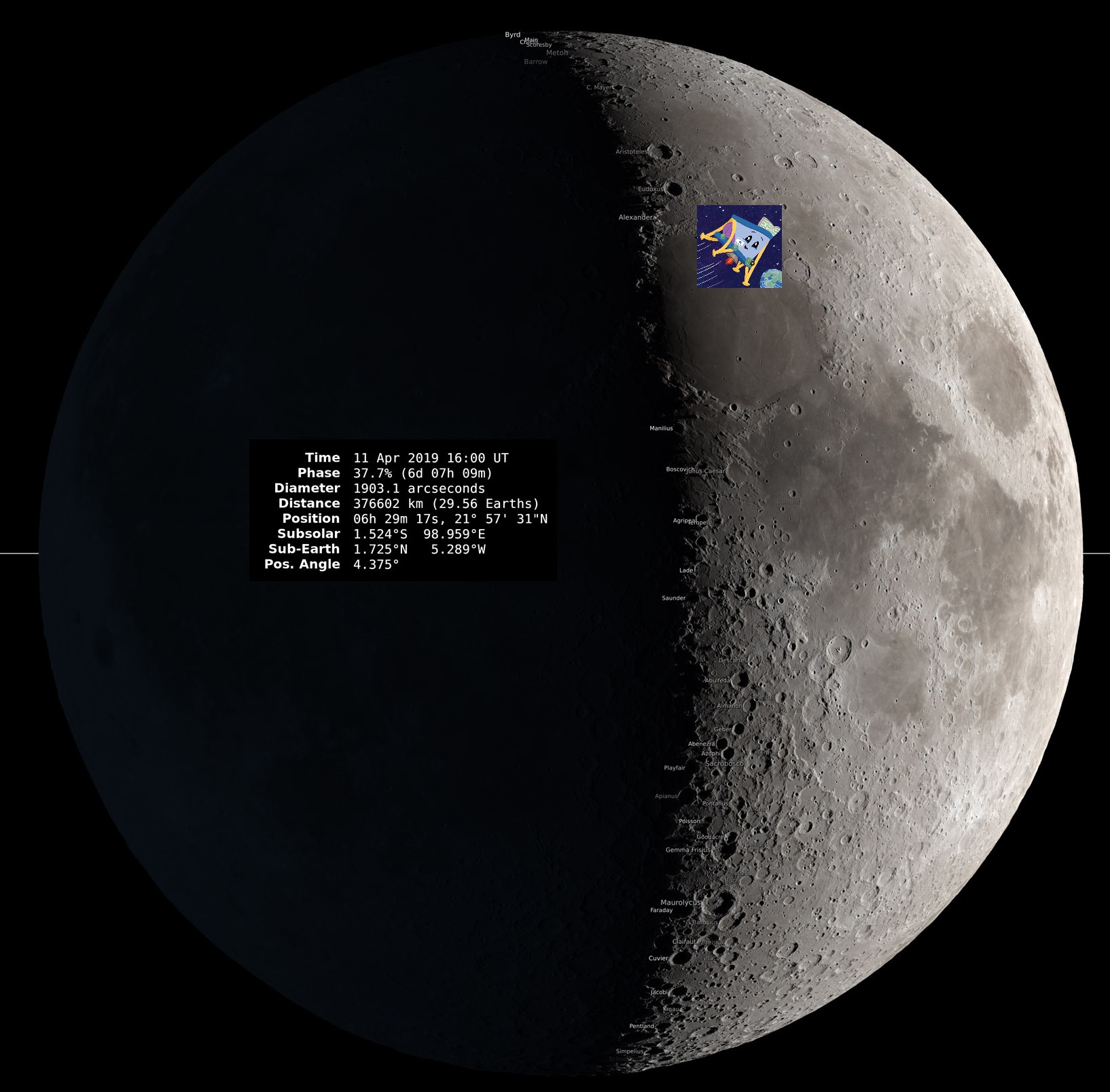
When landing, the on-board computer of the Bereshit device will automatically find the most suitable safe landing area (the restriction is still there: the area of the planned landing zone is 30 square kilometers).
With the help of engines, the Bereshit device will reduce its speed to 0, after which at an altitude of five meters above the surface of the Moon, the engines will be completely turned off.
Further, the Bereshit unit will begin a slow free fall on the lunar surface, followed by touching. If everything goes smoothly, then at this moment the Bereshit device will become the first private spacecraft on the Moon.
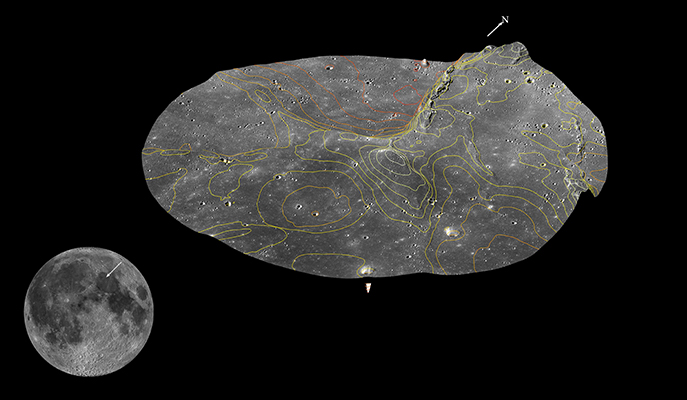
The planned landing site of the Bereshit vehicle is located in this area of the lunar surface:
Why did you choose a place for landing exactly in the Sea of Clarity?
Criteria for selecting a site for the landing of the vehicle "Bereshit":
- a large safe area in the landing zone with the ability to maneuver as needed while descending and landing the first time;
- site with a relatively small number of craters, detached stones or steep slopes in the landing zone;
- the presence of magnetic anomalies in the landing zone for the use of a magnetometer.
Video about the flight path of the Bereshit vehicle:
Here is how this series of maneuvers of the Bereshit apparatus in pictures looks in the description from the engineers of the SpaceIL organization: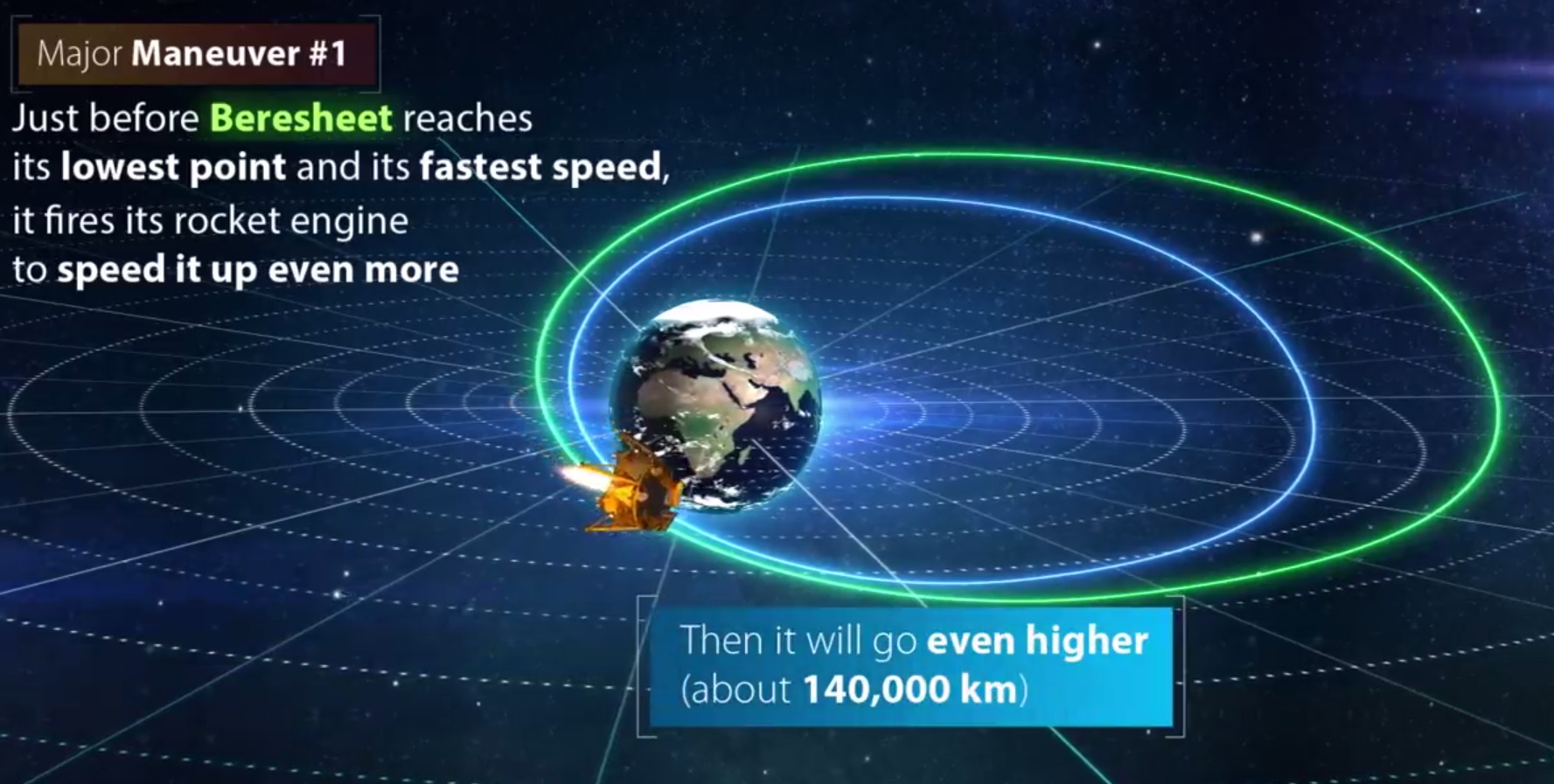

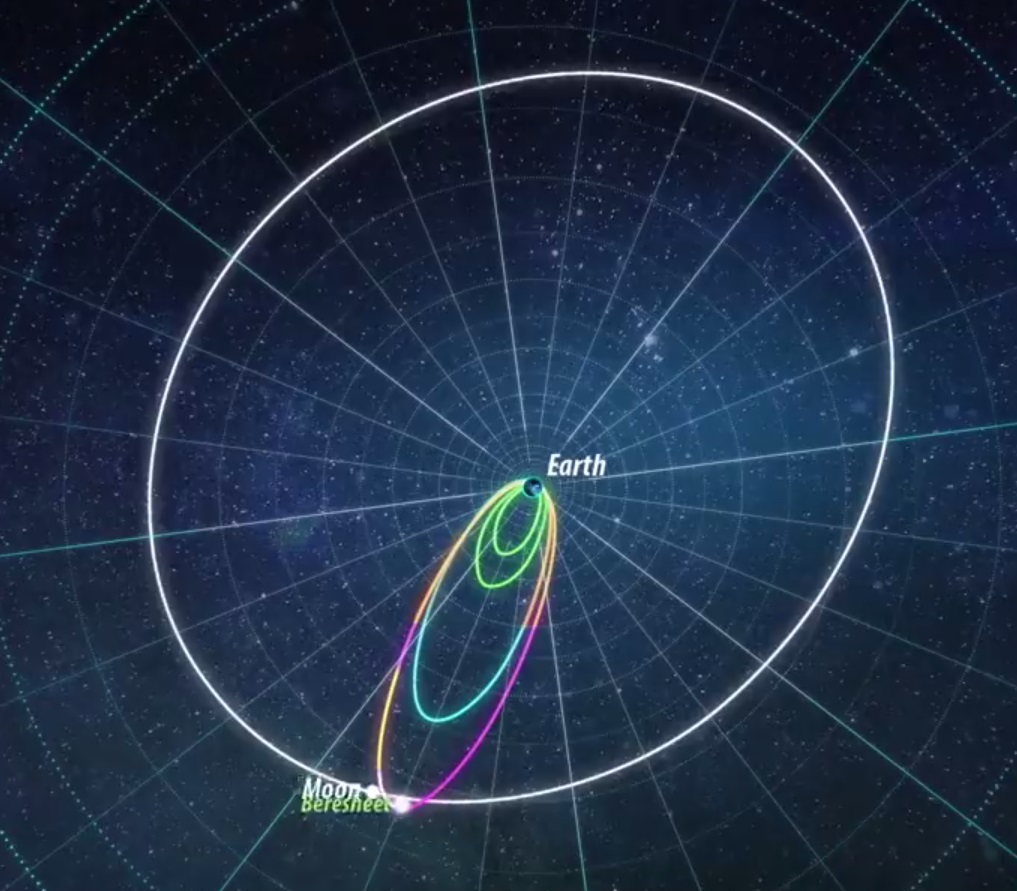
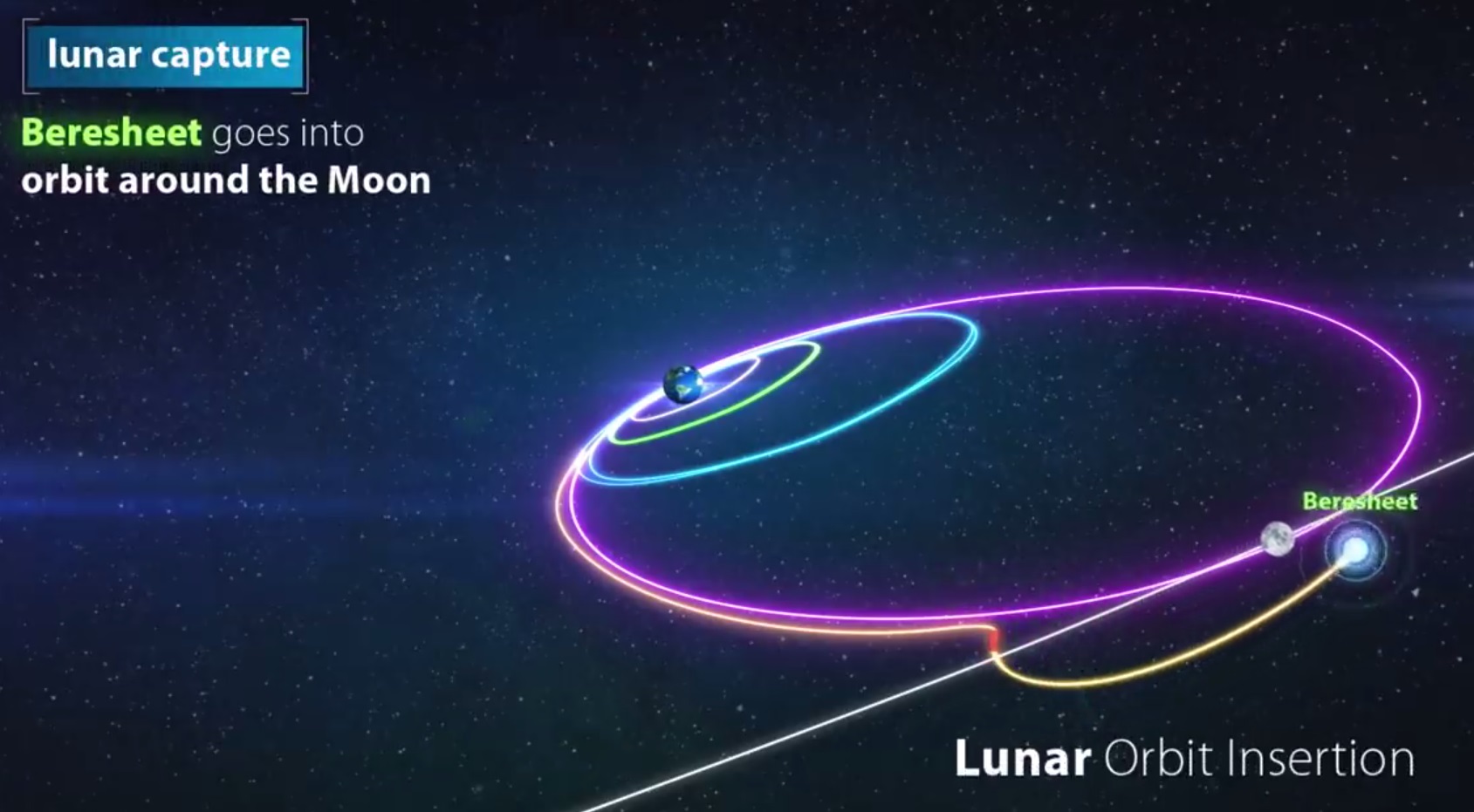


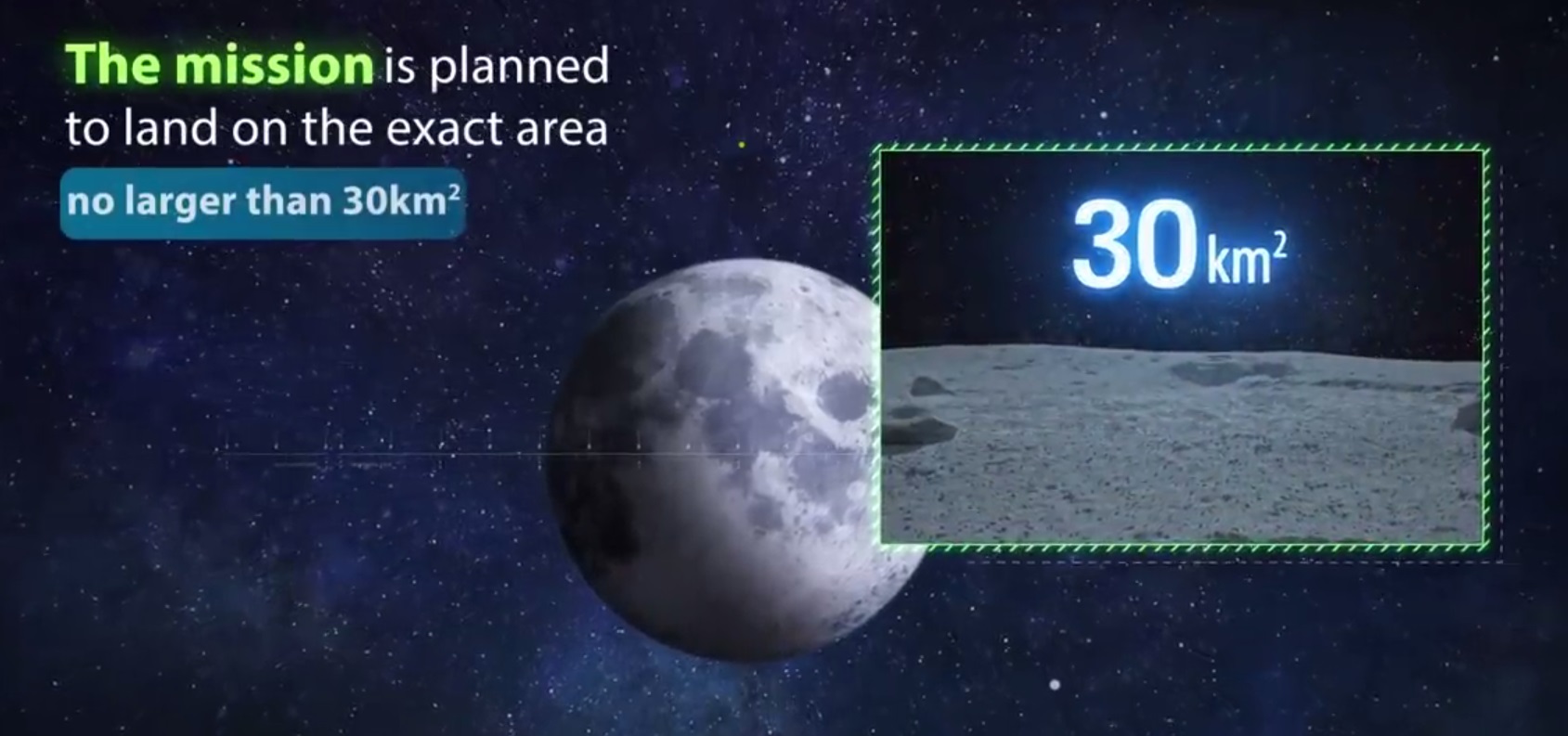















On March 31, 2019, the Bereshit unit made its last flight around the Earth and at a distance of 16,000 km made such a wonderful photograph (the Arabian Peninsula and northeastern Africa are visible):

Photos and video previously taken with the Bereshit device:
A short (12 seconds) video from the onboard camera of the Bereshit device was recorded shortly after separation from the Falcon 9. In the background you can see the outlines of the installation with the main payload (Indonesian communications satellite), performing correction of its position, on the left side of the Moon. At the end of the roller, the mechanism for advancing the landing support of the Bereshit apparatus, which was folded at the time of launch, is triggered.
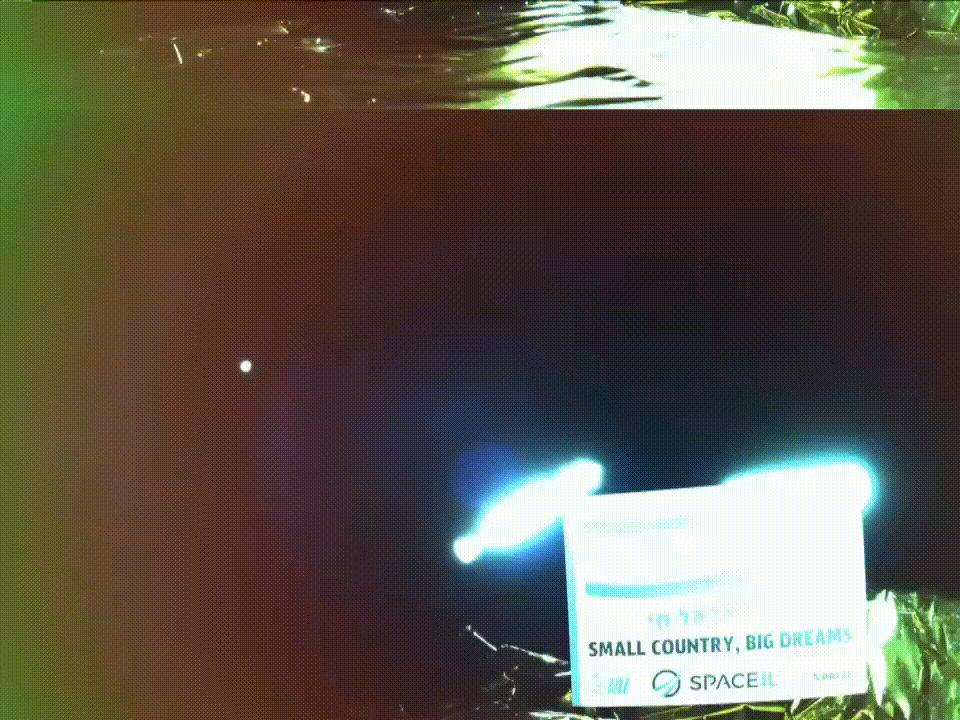
Photos from a distance of 15,000 km:

Photo from March 3, 2019 from a distance of 37,600 km:
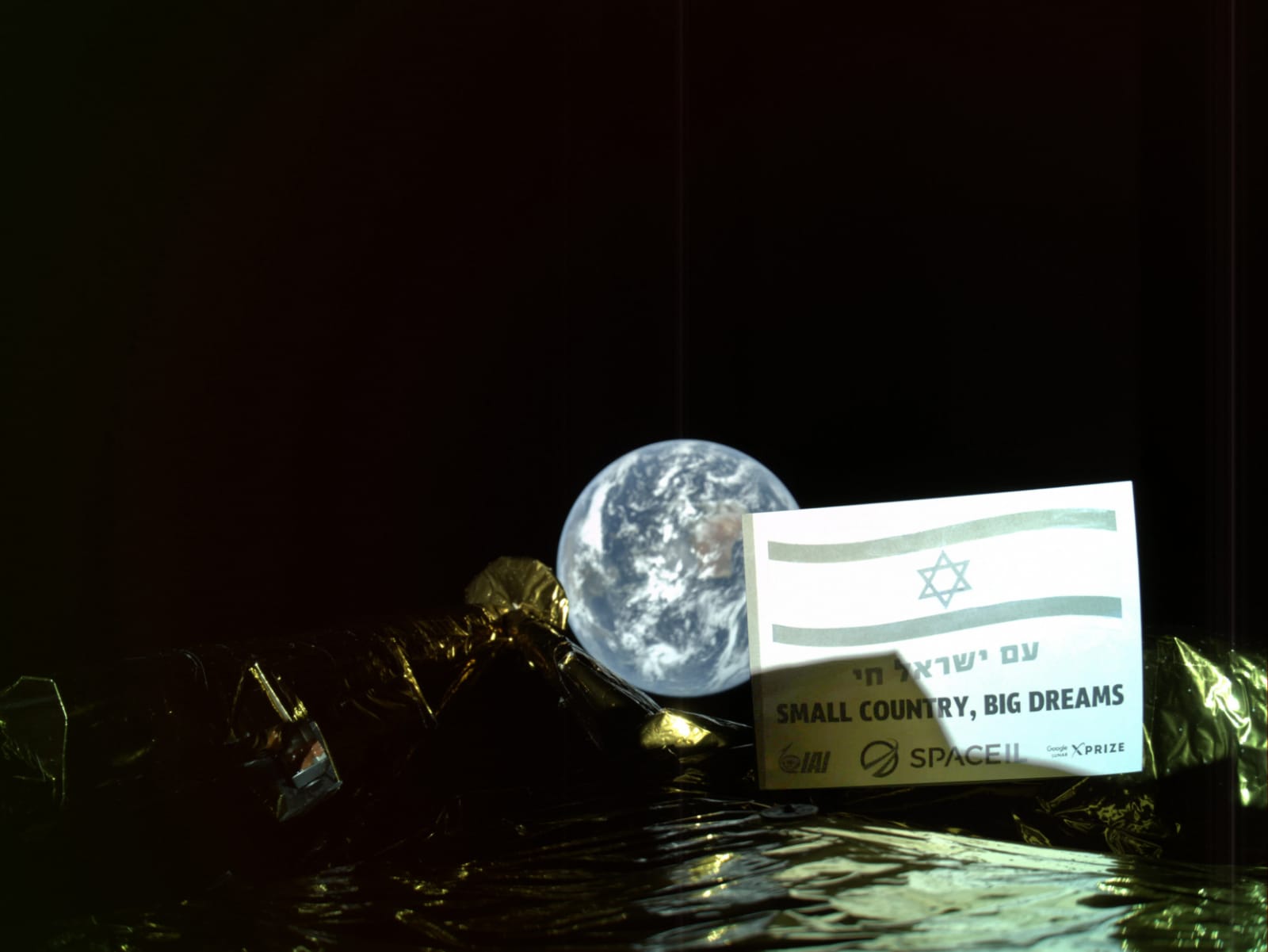
Photos from a distance of 131,000 km:
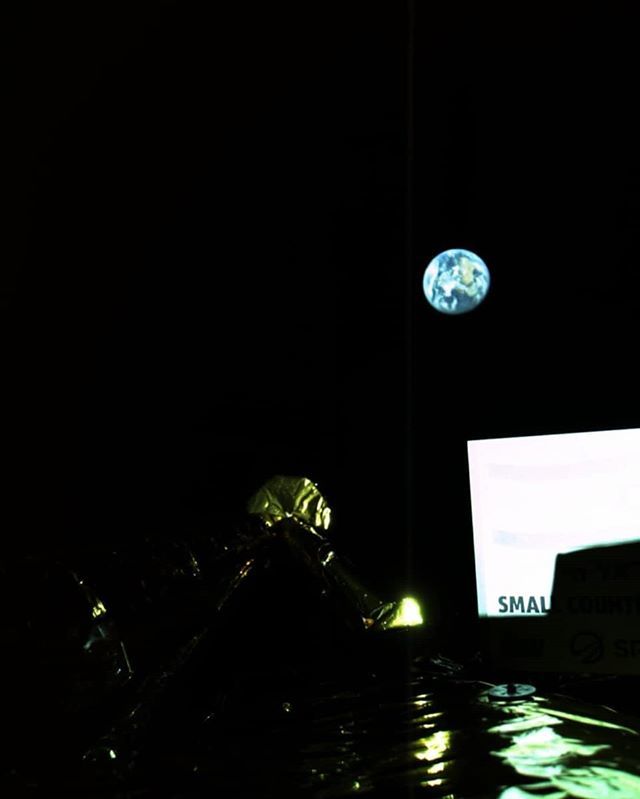
Photos from a distance of 265,000 km:


Photos from a distance of 15,000 km:

Photo from March 3, 2019 from a distance of 37,600 km:

Photos from a distance of 131,000 km:

Photos from a distance of 265,000 km:

The table of maneuvers performed by the Bereshit spacecraft in Earth orbit:

The table of lunar maneuvers of the Bereshit apparatus:

Planned April 3-4 maneuvers for approaching the Moon:


Planned maneuvers in lunar orbit on April 4-5:

As a transition to the lunar orbit visually looks like:
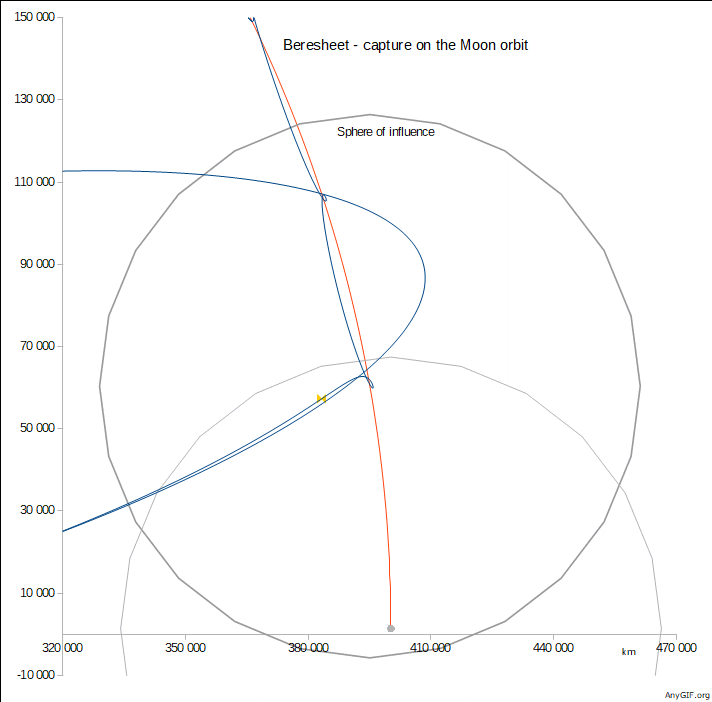

Red dot and trajectory - the Moon, blue dot and a trajectory - the Bereshit device

The same, but still added in other planes of graphics:
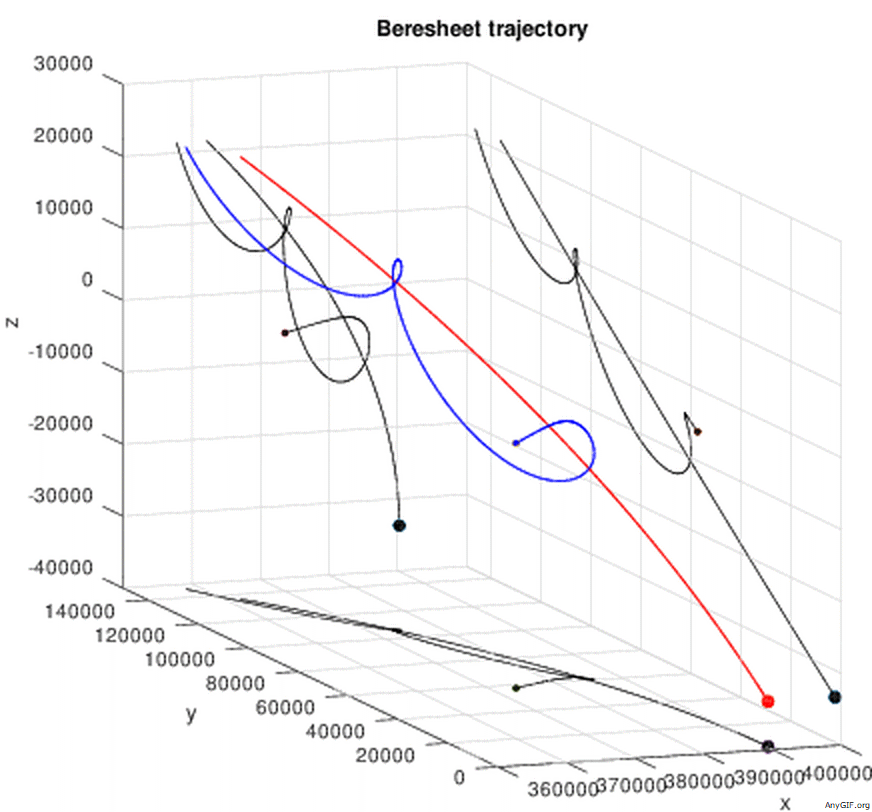
Estimated trajectory of the Bereshit apparatus in lunar orbit:
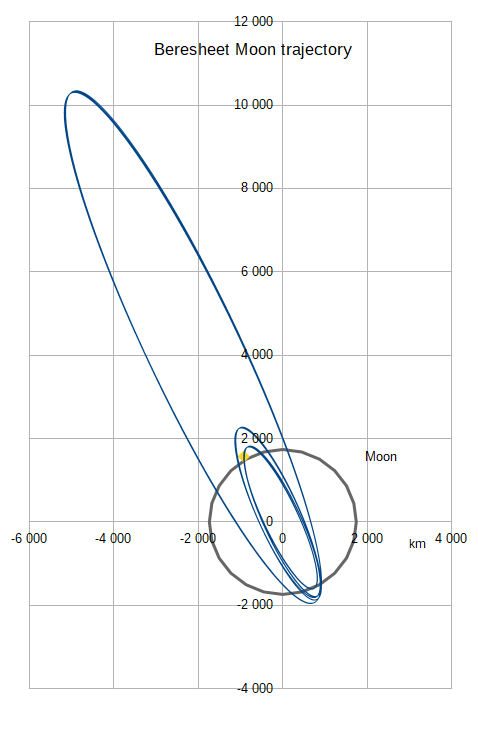
Estimated "jumps" around the moon:
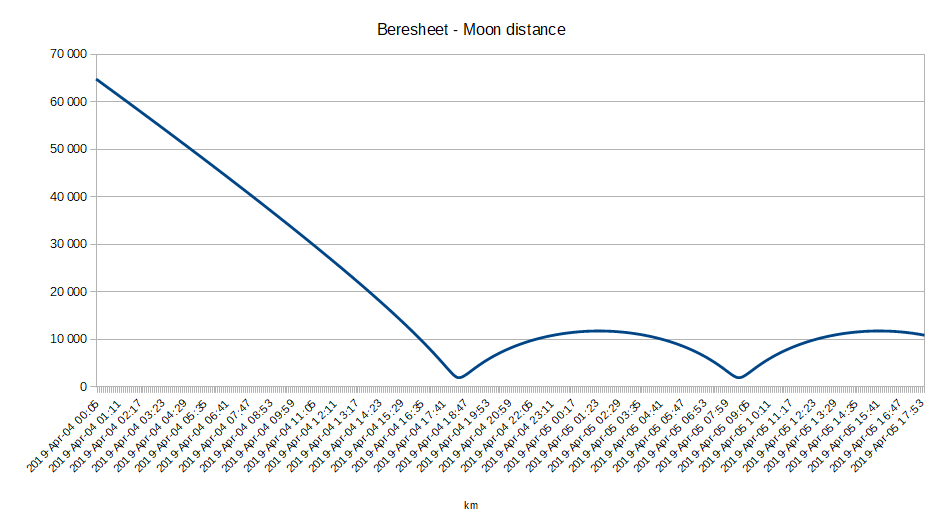

And the most important moment of the transition to the lunar orbit, when you need to have time to get into a small jump window between orbits and execute a maneuver to turn on the engines for leaving Earth orbit:

Actual events occurring with the device "Bereshit":
On April 1, 2019, the Bereshit unit made a new maneuver to synchronize its position with the orbit of the Moon; the engines of the apparatus were turned on for 72 seconds.
Here is how this maneuver took place (the letter Z turned out) near the moon:

April 2, 2019 - the Bereshit device moves away from the Earth:


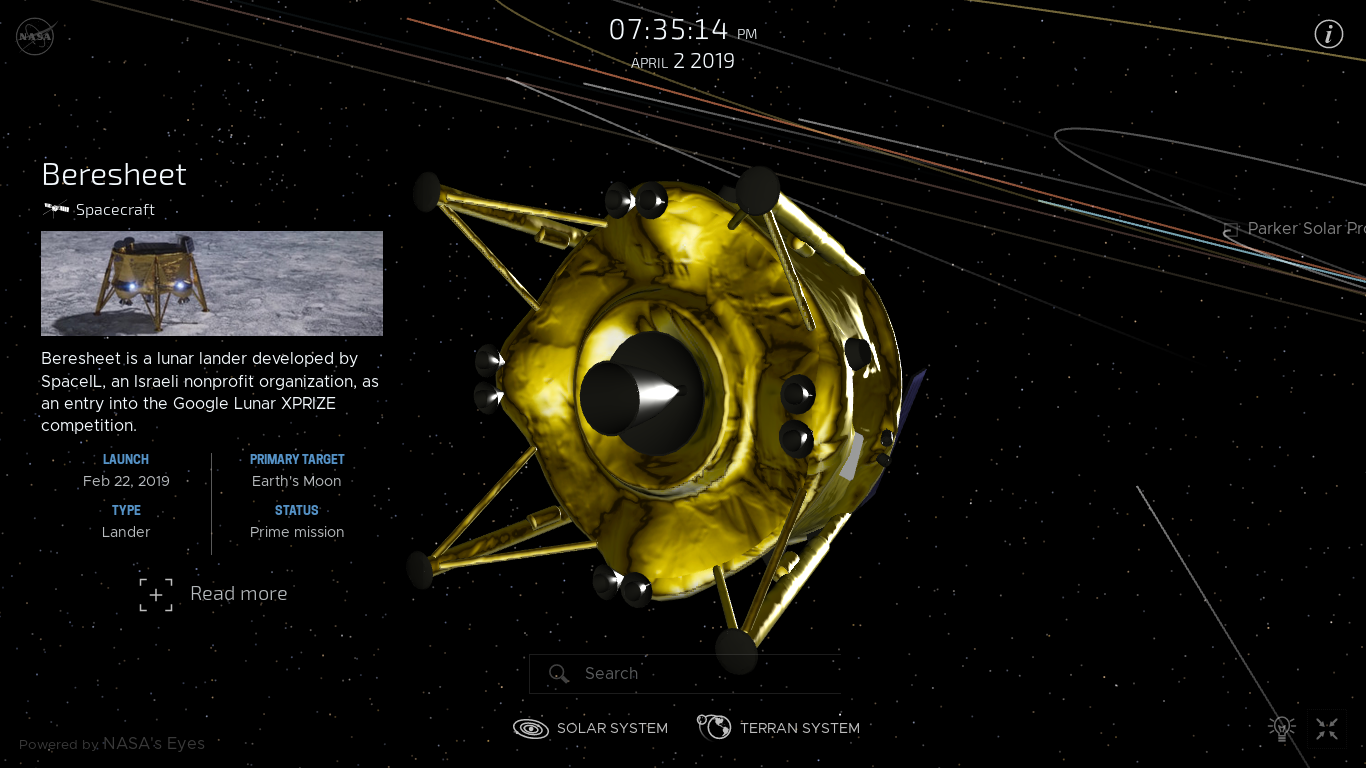
April 3, 2019:



The distance to the moon is 87400 kilometers, at the Bereshit apparatus the speed is 382 m / s:

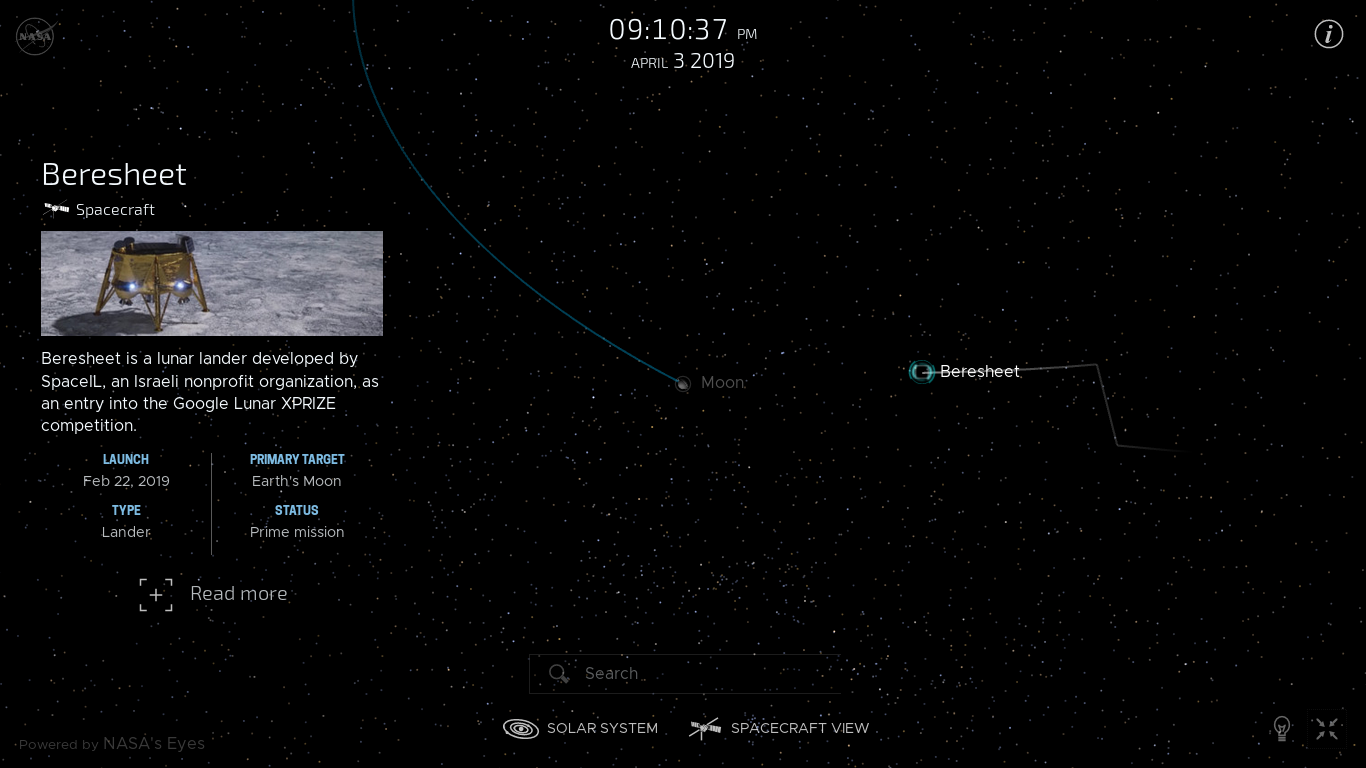


April 4, 2019:

7 hours before the transition (the time shown in the picture below is UTC +5):

4 hours:

1 hour before the maneuver:

Less than 1000 kilometers to the lunar surface:

The trajectory of the forty-day flight apparatus "Bereshit":
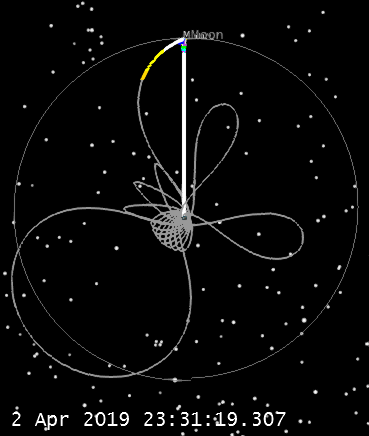
Engineers at SpaceIL and Israel Aerospace Industries (IAI) prepared for the lunar maneuver the final version of the command sequence for the on-board computer of the Bereshit device, drove this maneuver several times on the simulator, and at the same time prepared several backup plans that can be useful in case of various emergency situations on board.





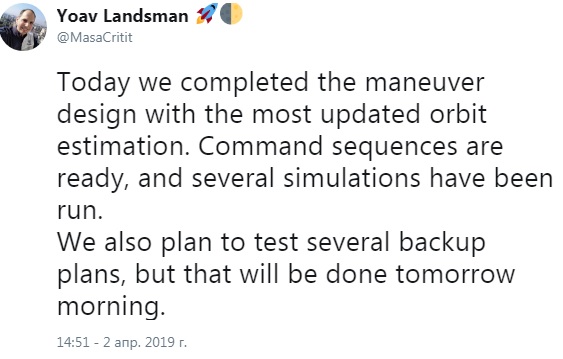
The transition window of the Bereshit apparatus to the lunar orbit is April 4, 2019, 14.18 UTC, at which time the main sequence of switching on the engines will be activated, there is enough fuel onboard the Bereshit apparatus (more than 250 kg).
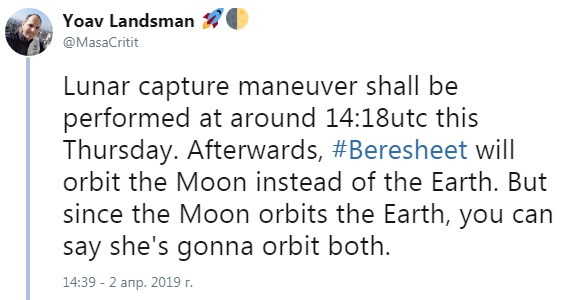
Live broadcast started from MCC:
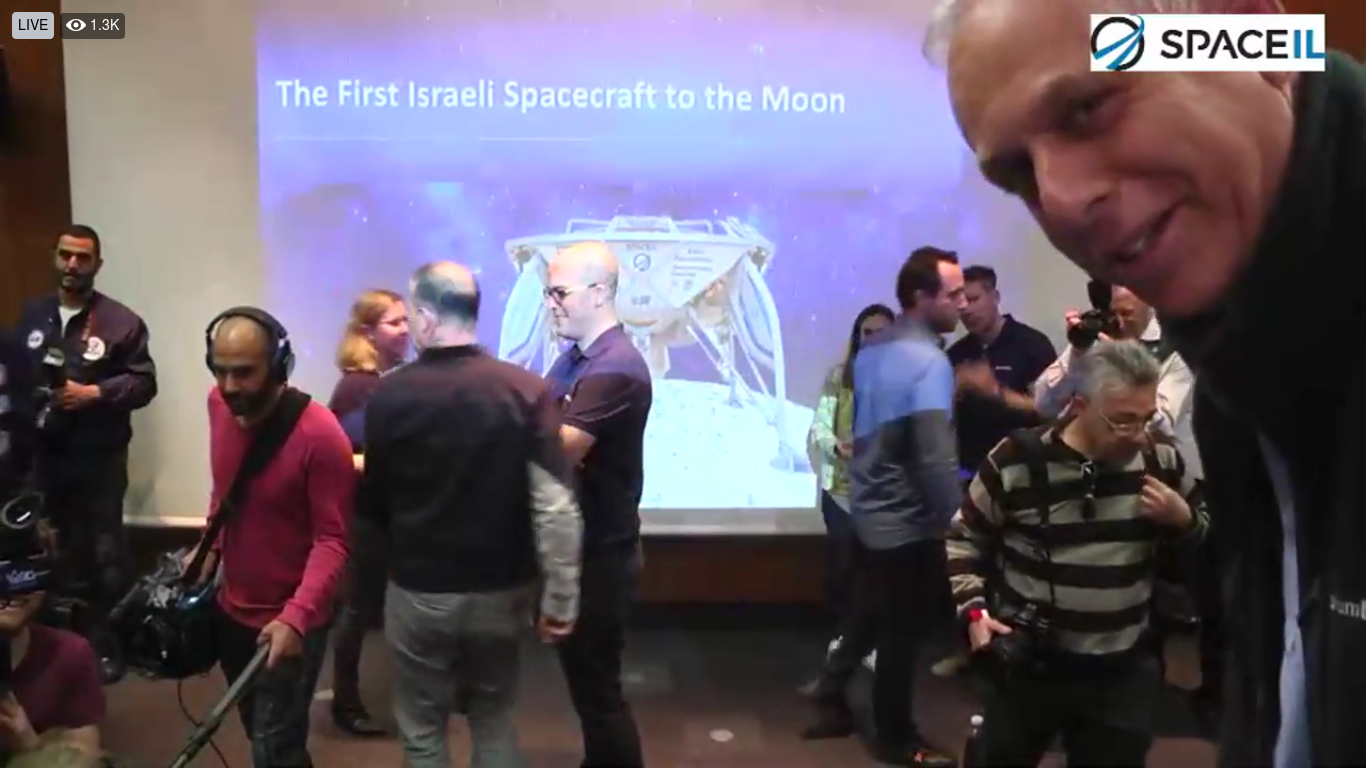
Landing Date:

Problems and solutions that were in space (there were many reloads of BC!):
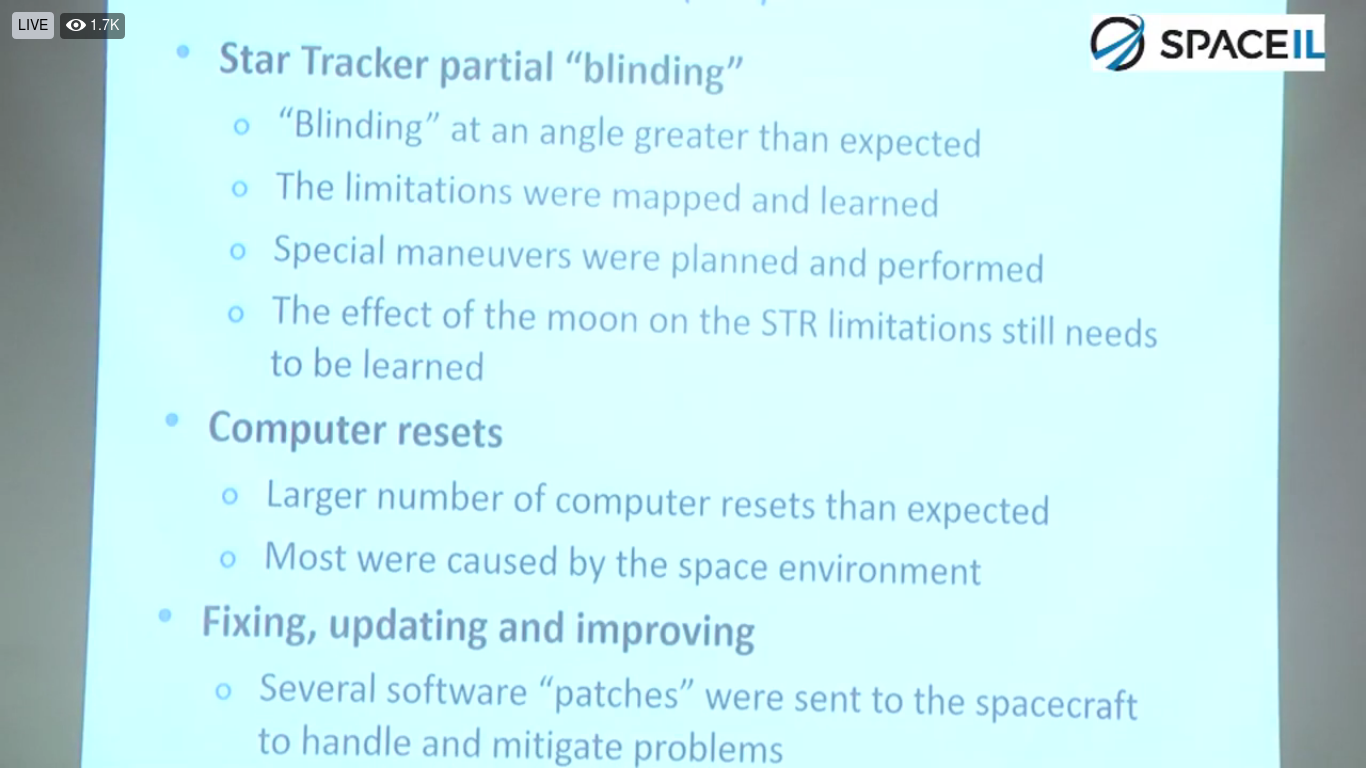
What stages have already been completed:
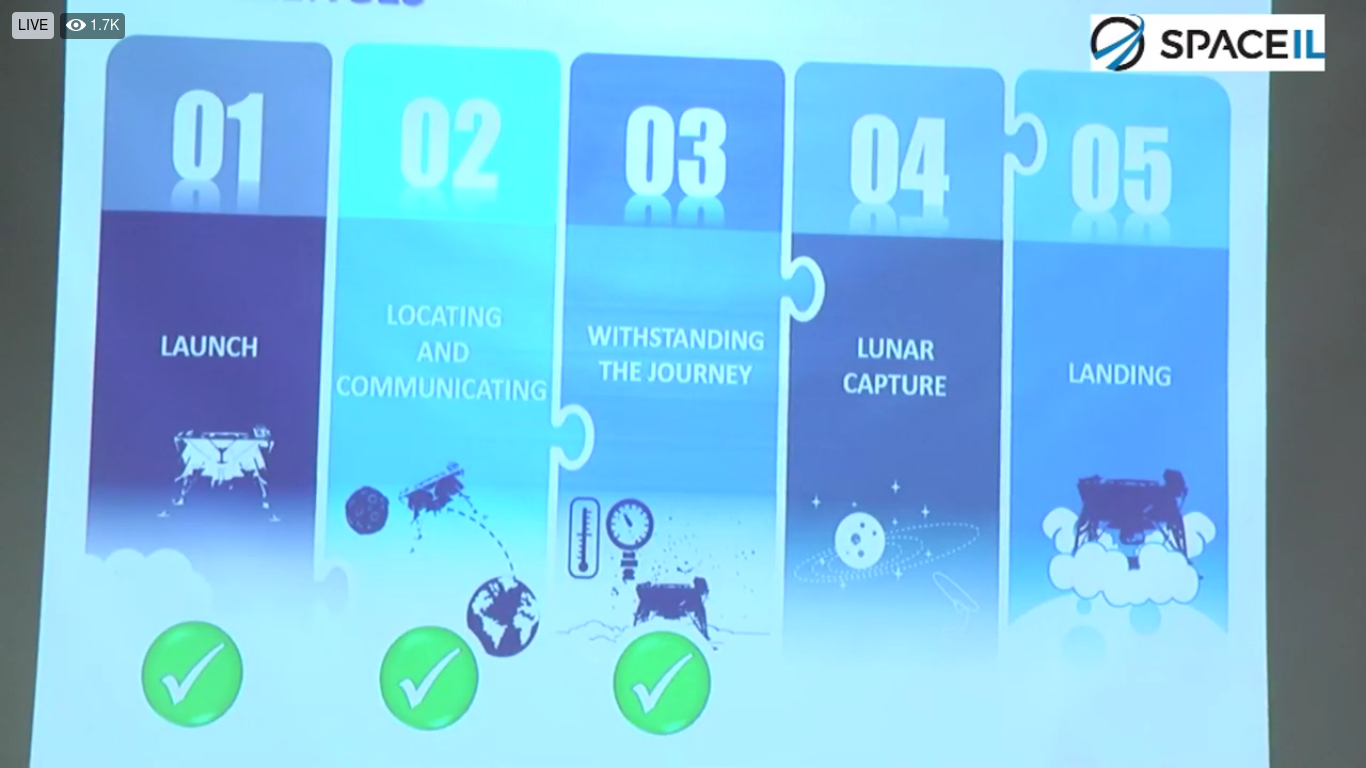
And now the screen rises, and we see the engineers of the MCC at work:



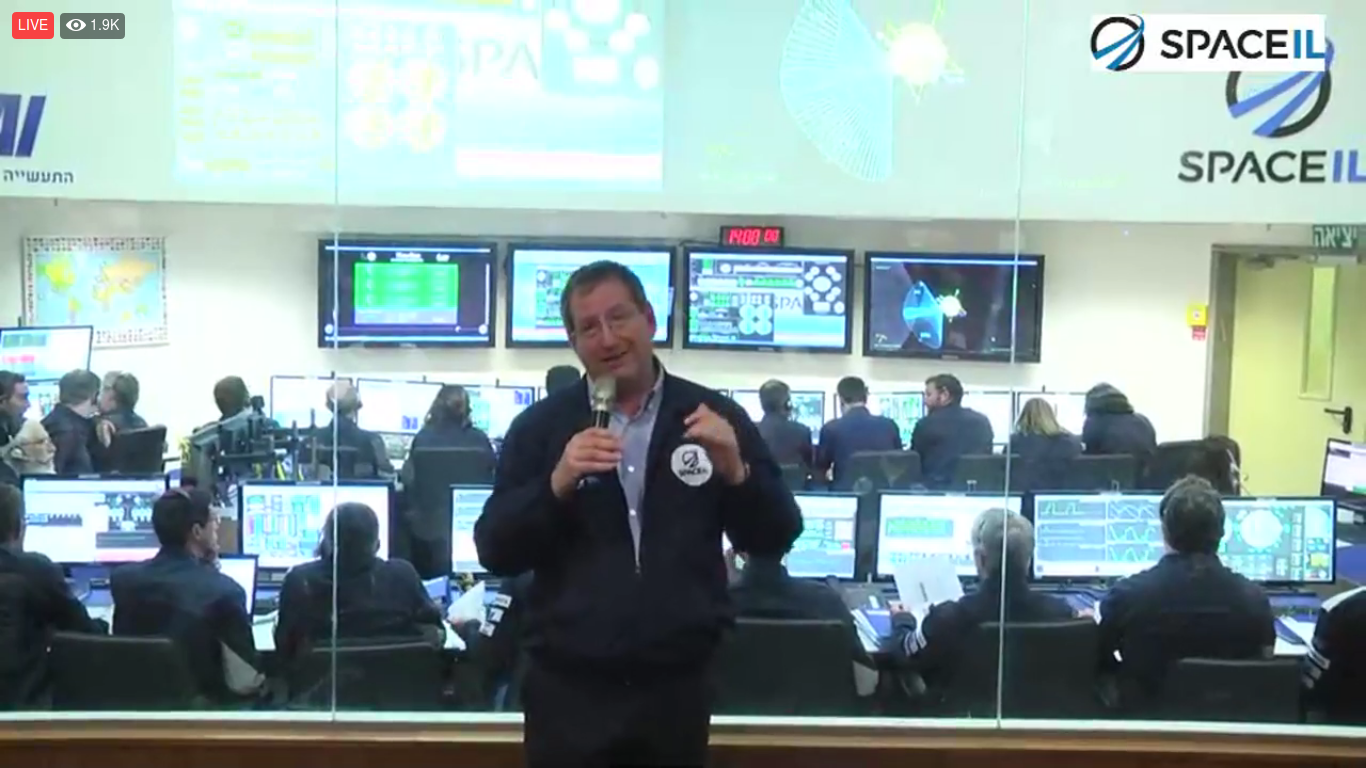
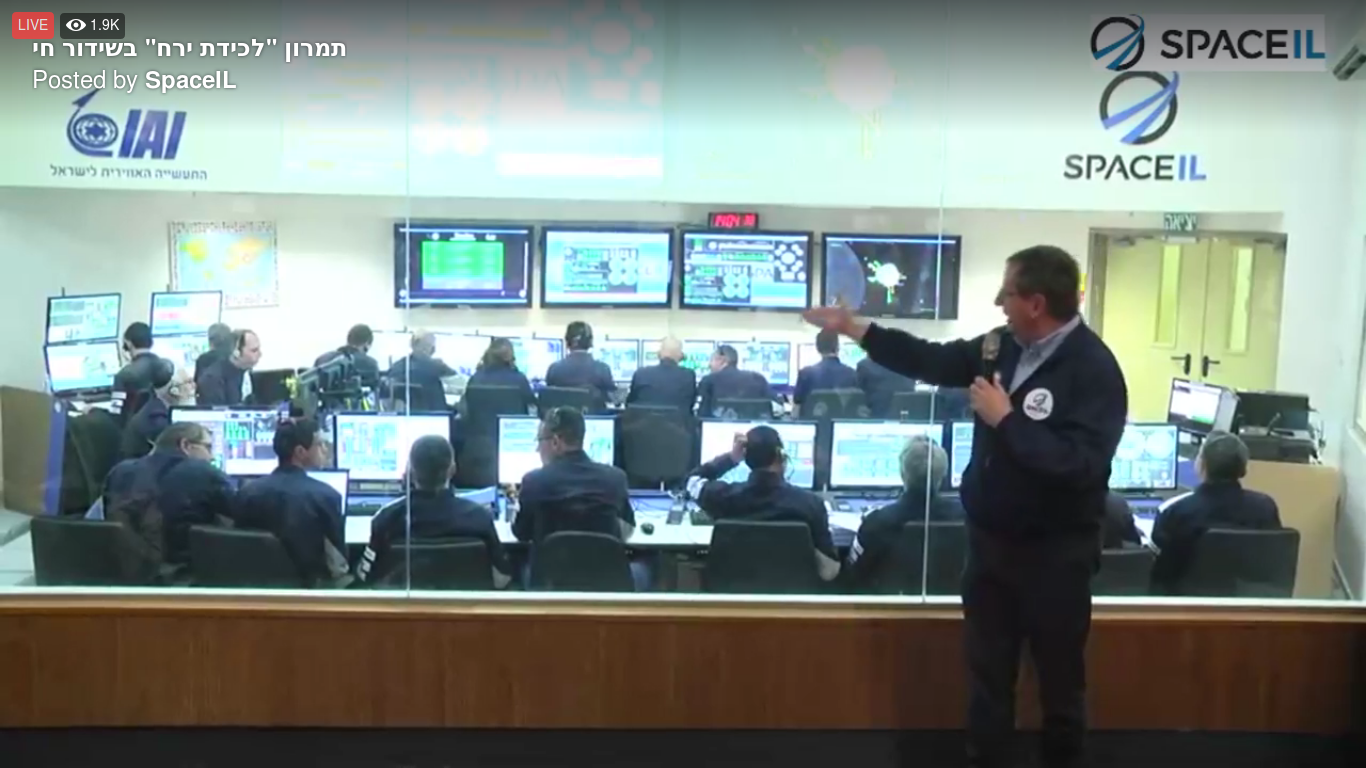





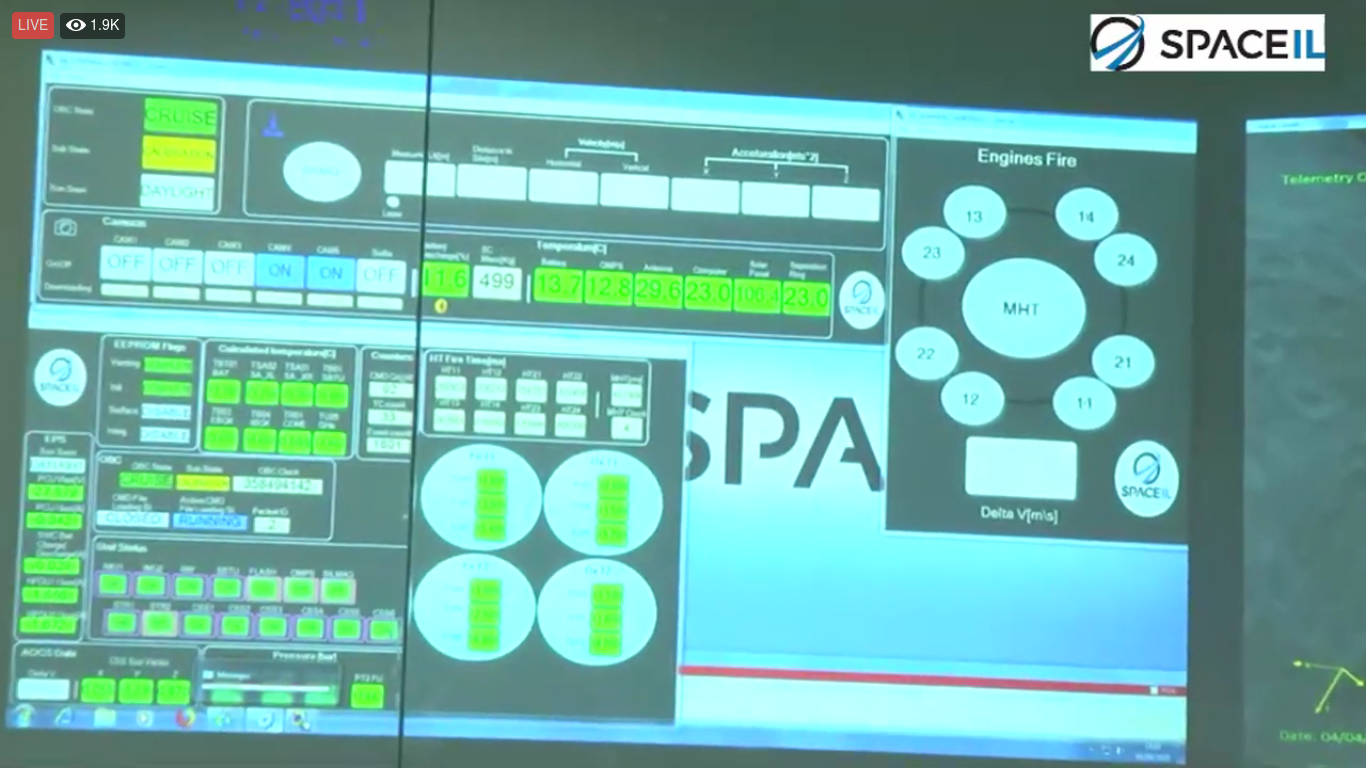

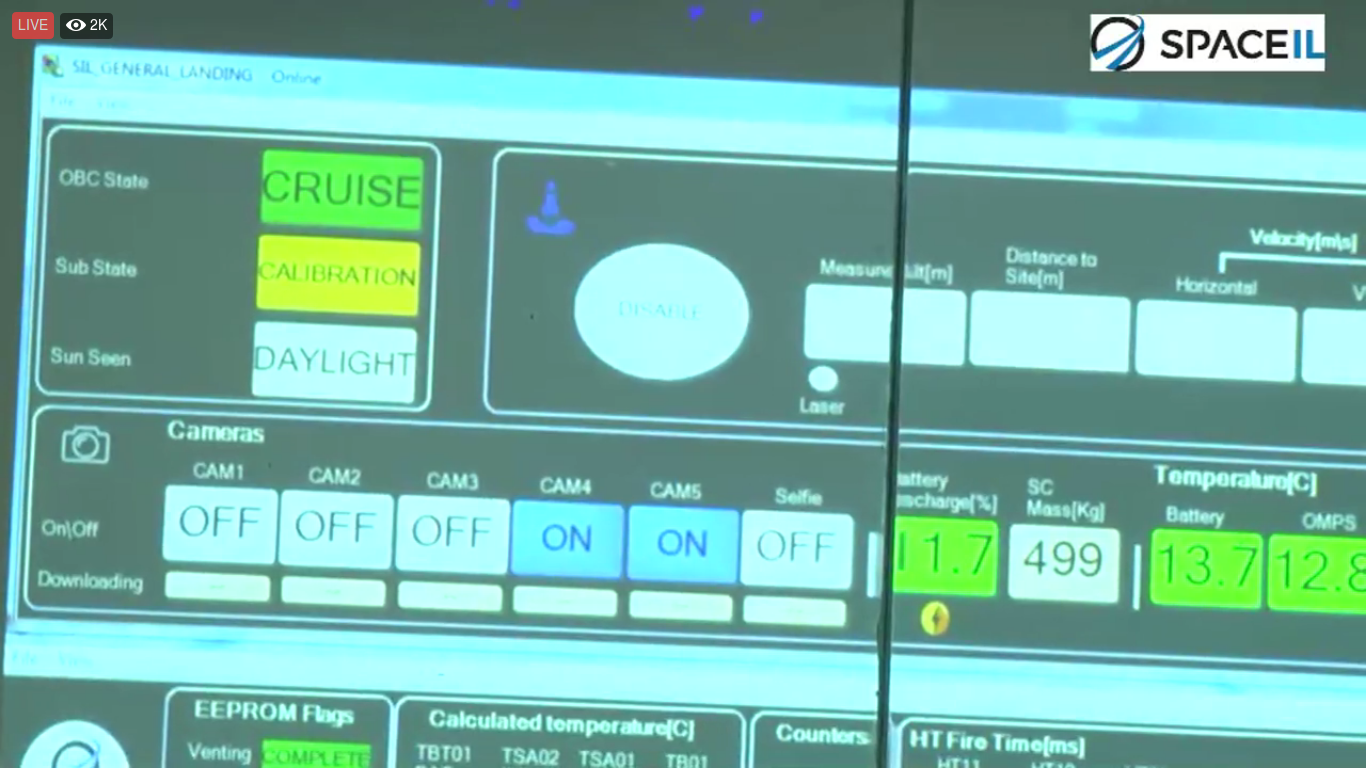
Six cameras - 2 are working at the moment.

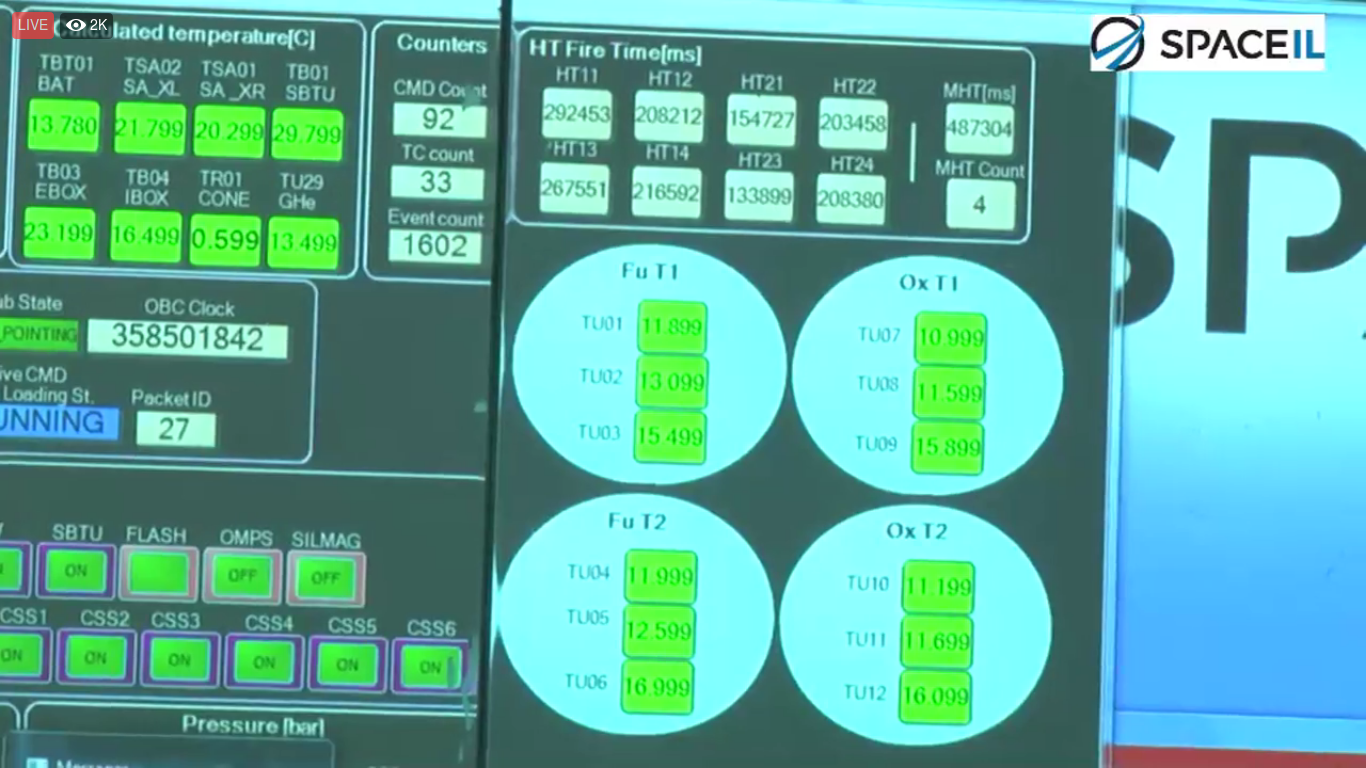

Space maneuvers, and the cleaning lady behind the door on the right washes the floors at this time without any problems!

Maneuver begins:
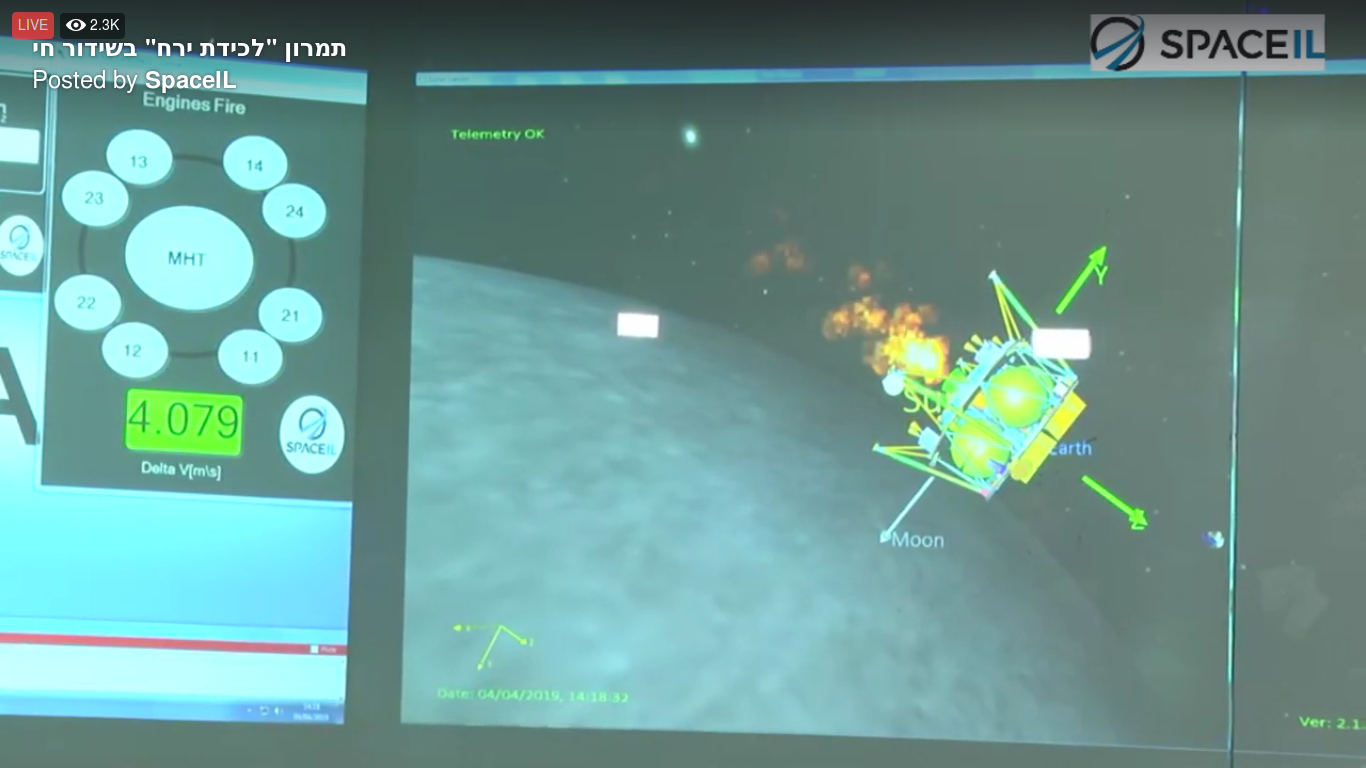

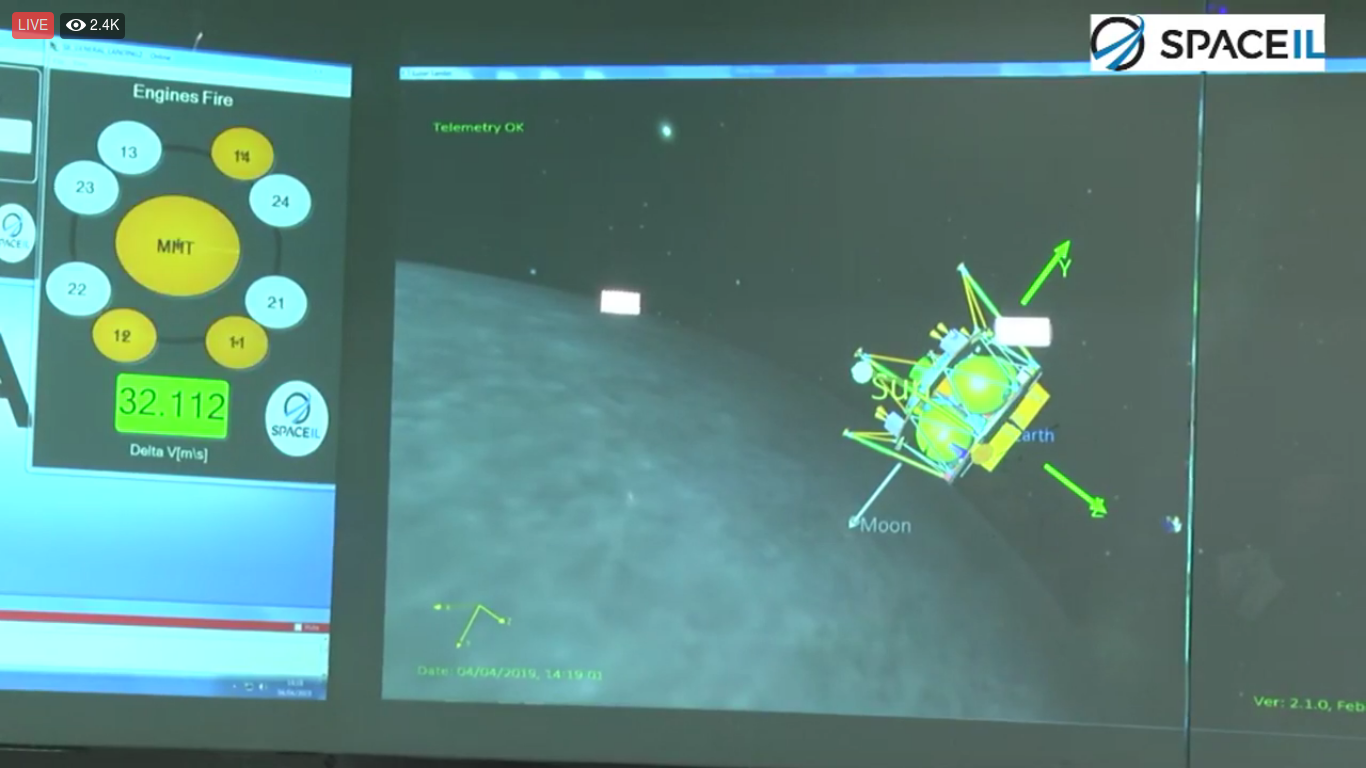
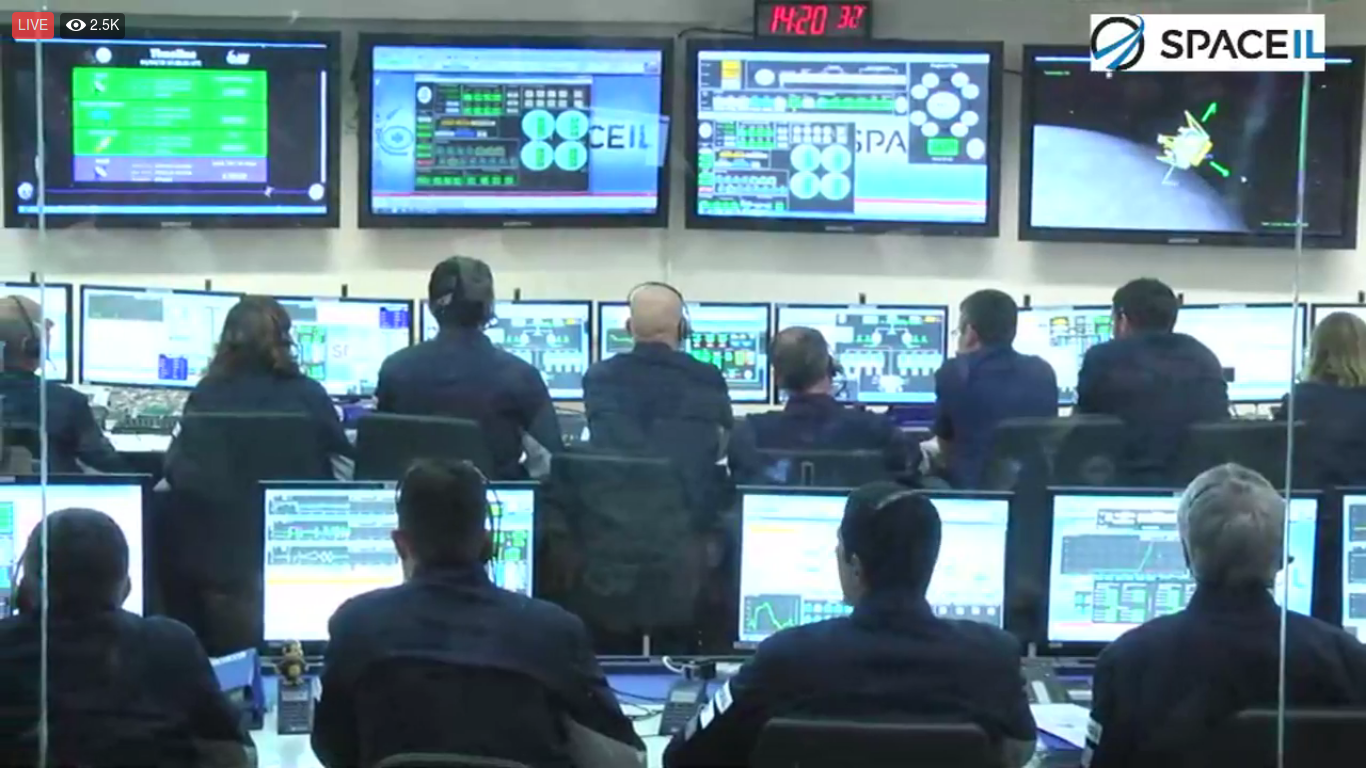
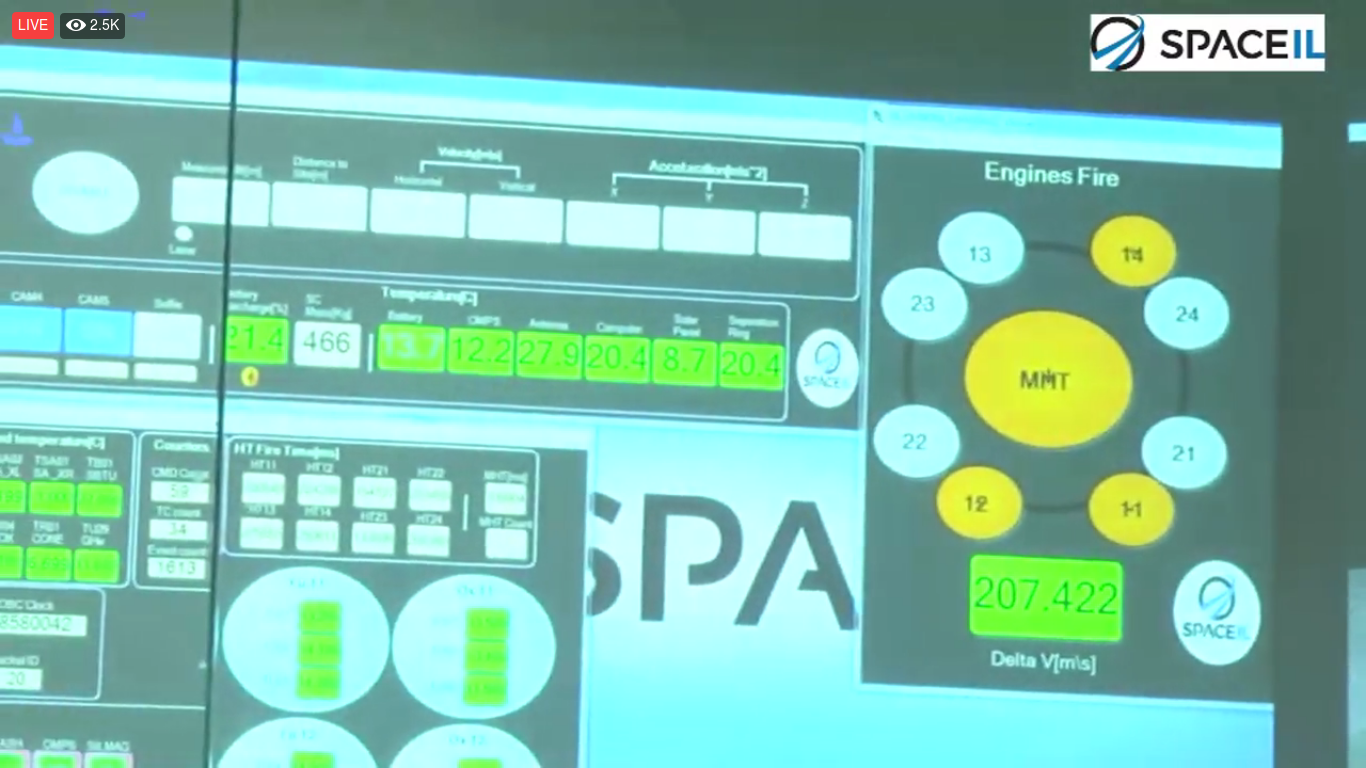


A bit more:




Yes! Happened!



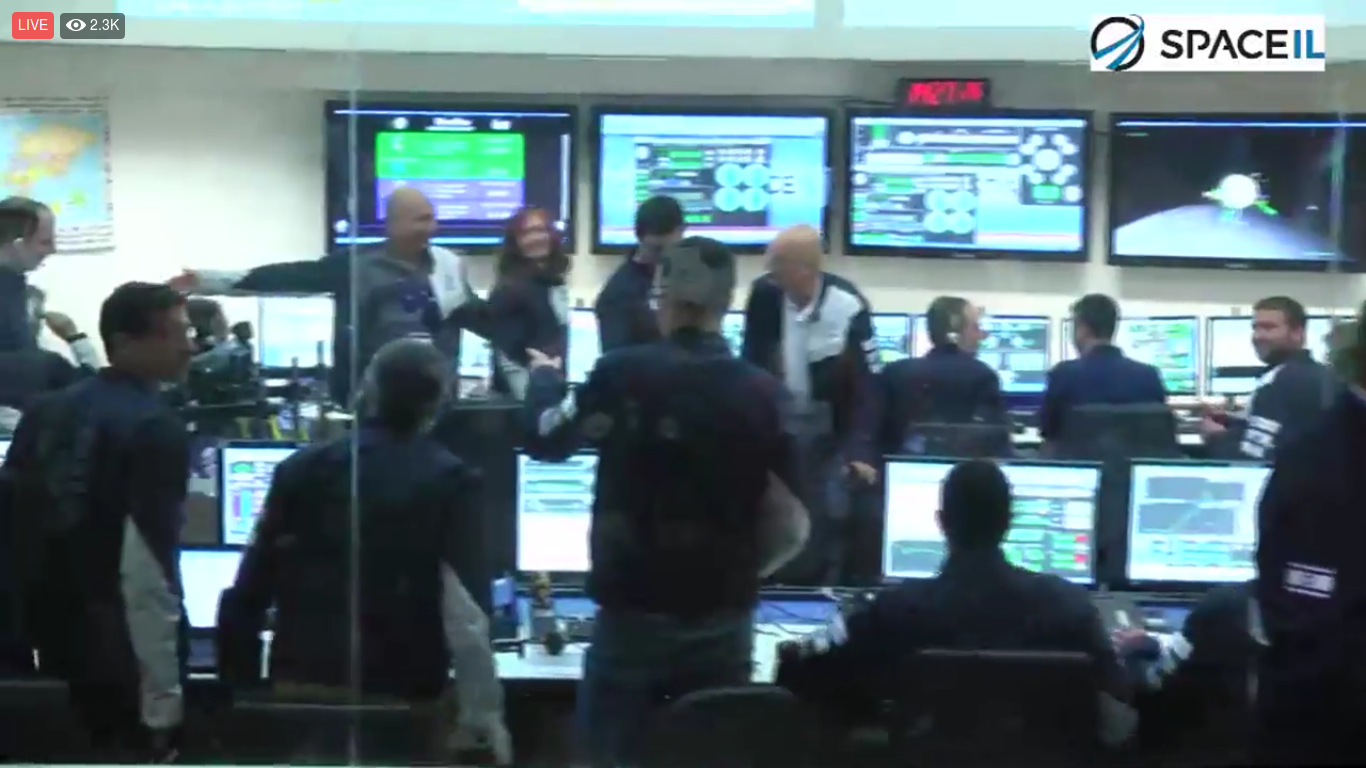

Video of the moment of maneuver:
Behind more than 5.5 million kilometers of space travel.
So, more than 40 days the Bereshit spacecraft was in outer space, jumping farther and farther along the orbits of the Earth.
On April 4, 2019, the Bereshit apparatus, according to official data, entered the lunar orbit!


The first elliptical lunar orbit of the Bereshit apparatus has apolations of 10,400 km and periselenias of 470 km.


About communication system:
SpaceIL does not have its own space communications center, so the organization of data transmission between the MCC on Earth and the Bereshit device in space is a complex process, which involves:
- a network of antennas of the Swedish Space Corporation (Swedish Space Corporation), thanks to which the Bereshit device transmits navigation commands and tracks its trajectory;
- NASA's Remote Space Network (DSN) for controlling the Bereshit device and transmitting scientific data from the device to Earth after its landing on the Moon.
DSN is a network of radio telescopes and a system of dozens of huge antennas for communication with spacecraft in deep space, it is operated by NASA's Jet Propulsion Laboratory in Pasadena, California.
At the moment, in a test mode, 4 DSN antennas are involved in the communication system with the Bereshit device.

The main milestones of the mission "Bereshit" passed, it remains extreme - landing April 11, 2019.

Do not forget to follow the mission "Bereshit" with:
- online resource with a simulator and real-time data on the current state of the mission “Bereshit”;

- NASA online simulator " Eyes on the Solar System ".
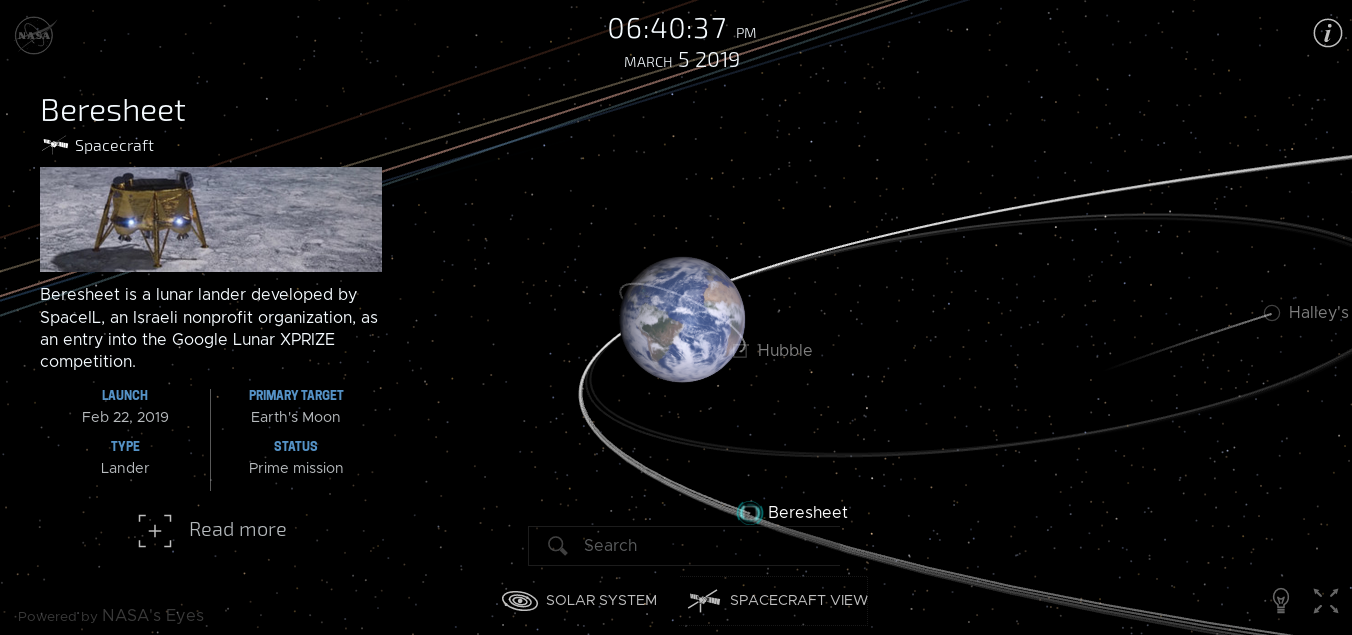
It also turns out that there is still such an interesting portal for studying the mission “Bereshit” and monitoring the parameters of the device: “ Where is Beresheet Probe ”.

Source: https://habr.com/ru/post/446452/
All Articles